Chemistry and Chemists № 2 2025
Journal of Chemists-Enthusiasts
| Content | Chemistry experiments - video | Physics experiments - video | Home Page - Chemistry and Chemists |
|
Chemistry and Chemists № 2 2025 Journal of Chemists-Enthusiasts |
Experiments with Nitrocellulose - pt.5, 6, 7 Chemist |
|
Having noticed a mistake in the text, allocate it and press Ctrl-Enter
Dissolving Nitrocellulose in Ethyl Acetate: Nitrocellulose Amoeba (Second Experiment) - Part 5
I have not yet been able to obtain high-quality acetone, and the "Man-Made Amoeba" experiment did not work well with low-quality acetone. Therefore, I decided to try ethyl acetate as an alternative solvent for nitrocellulose. Unlike acetone, ethyl acetate has limited solubility in water (8.3 g/100 mL at 20°C), so this substitution is not equivalent. For the "amoeba" effect, it is important that the solvent transfers from the drop into the water, forming "jets." Consequently, I estimated the chances of success to be low but decided to proceed with the experiment.
Растворение нитроцеллюлозы в этилацетате. Нитроцеллюлозная амеба (второй эксперимент) - часть 5 I weighed 2 g of the smokeless powder in a glass weighing bottle and added 30 mL of ethyl acetate in 10 mL portions, stirring the mixture occasionally with a wooden stick. The ethyl acetate turned yellow, and the nitrocellulose grains stuck together and began to swell. After a few hours, a viscous liquid had formed in the weighing bottle. The process resembled dissolving nitrocellulose in low-quality acetone but occurred much faster. Using the stick, I placed a drop of the solution on the surface of water in a crystallizer. The drop elongated into a "worm" or "slug"-like shape and moved along the water's surface for a few seconds before stopping, as a thin film formed around it. Other drops behaved similarly. Removing the film with a stick had no noticeable effect. The result was worse than with low-quality acetone. |
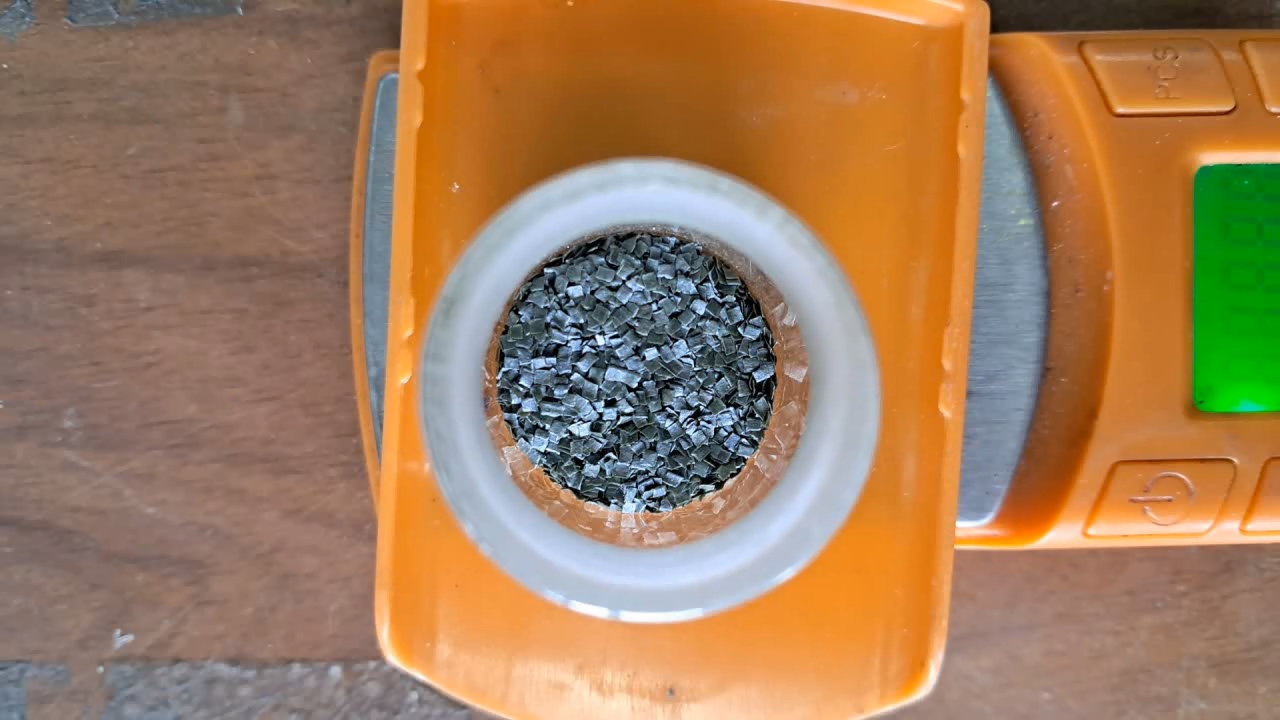
Dissolving Nitrocellulose in Ethyl Acetate: Nitrocellulose Amoeba (Second Experiment) |
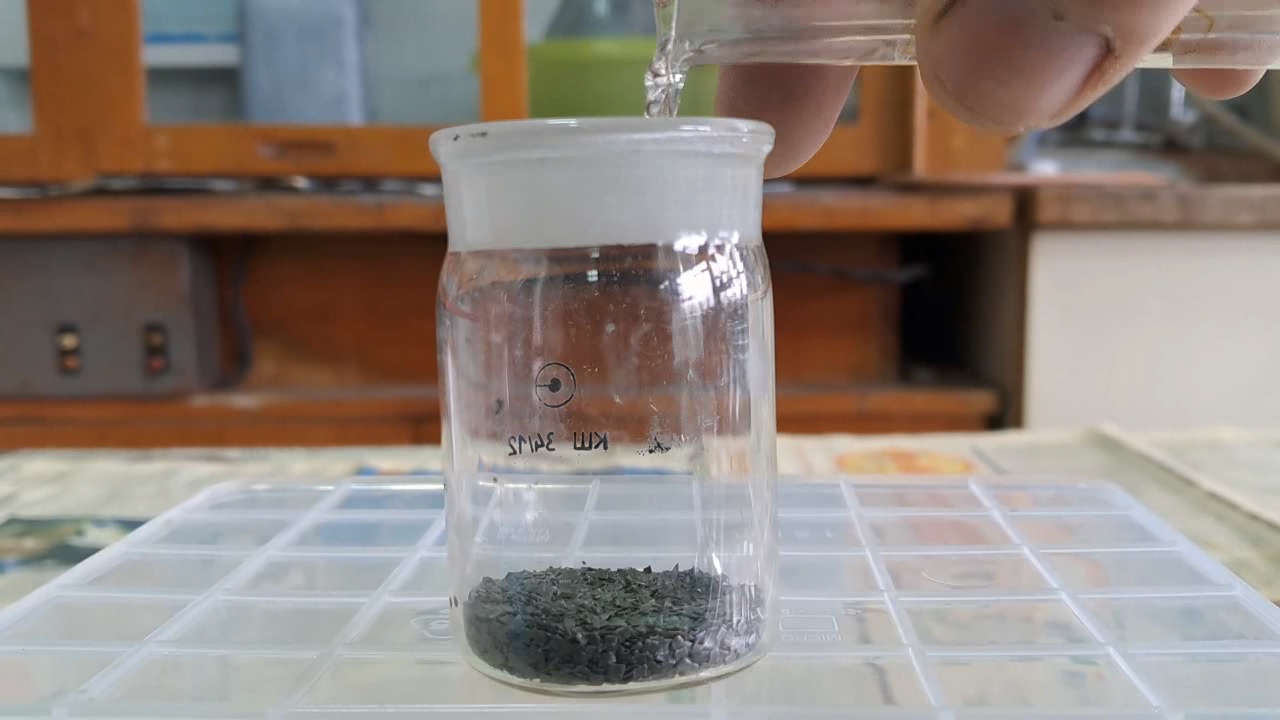
|
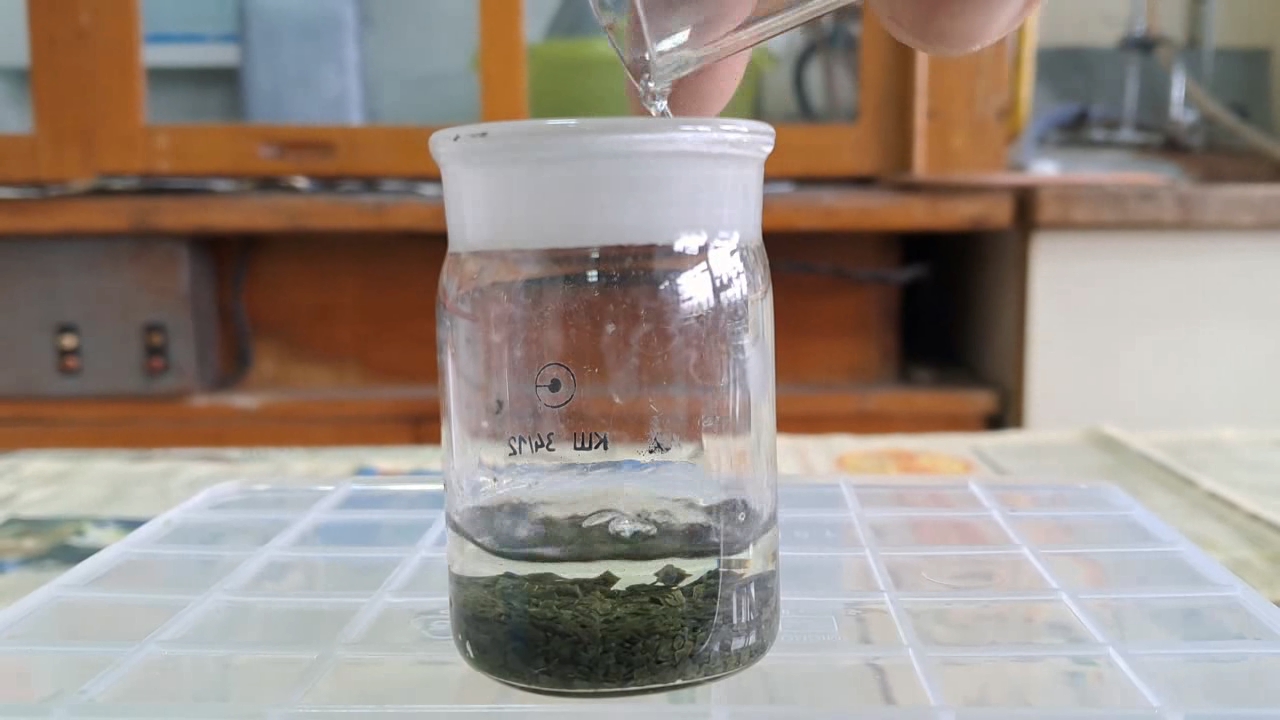
|
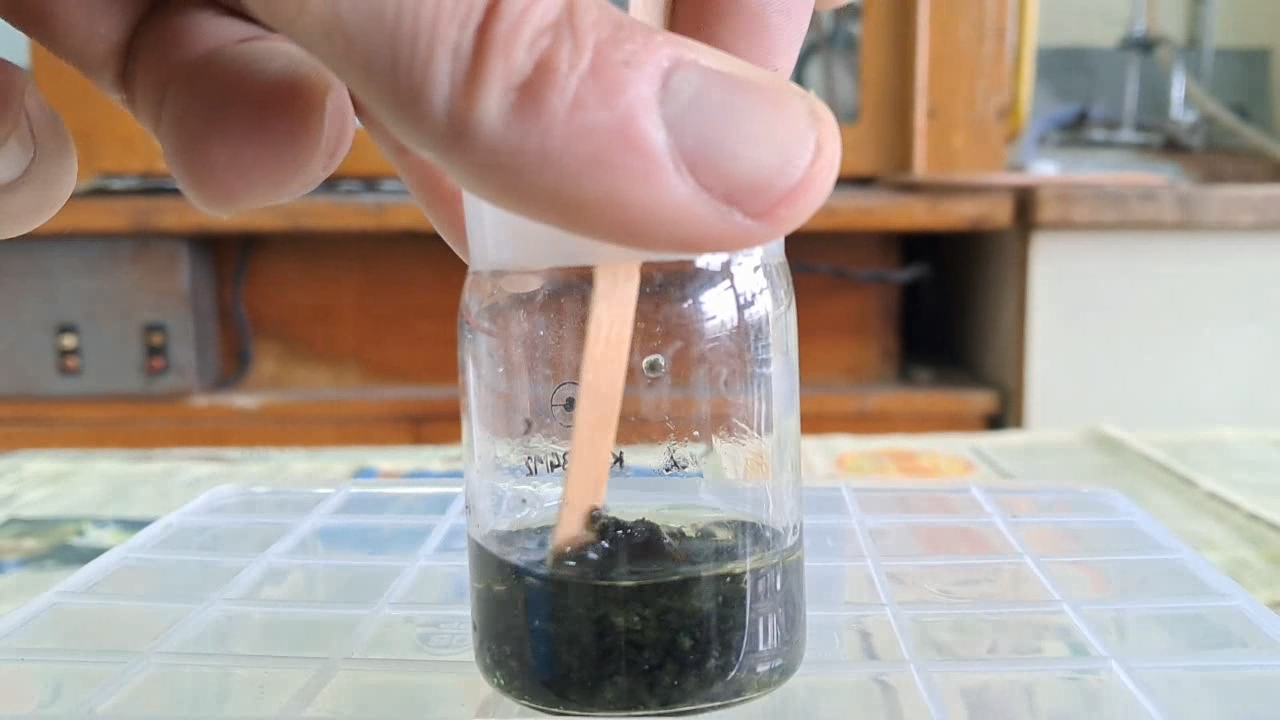
|
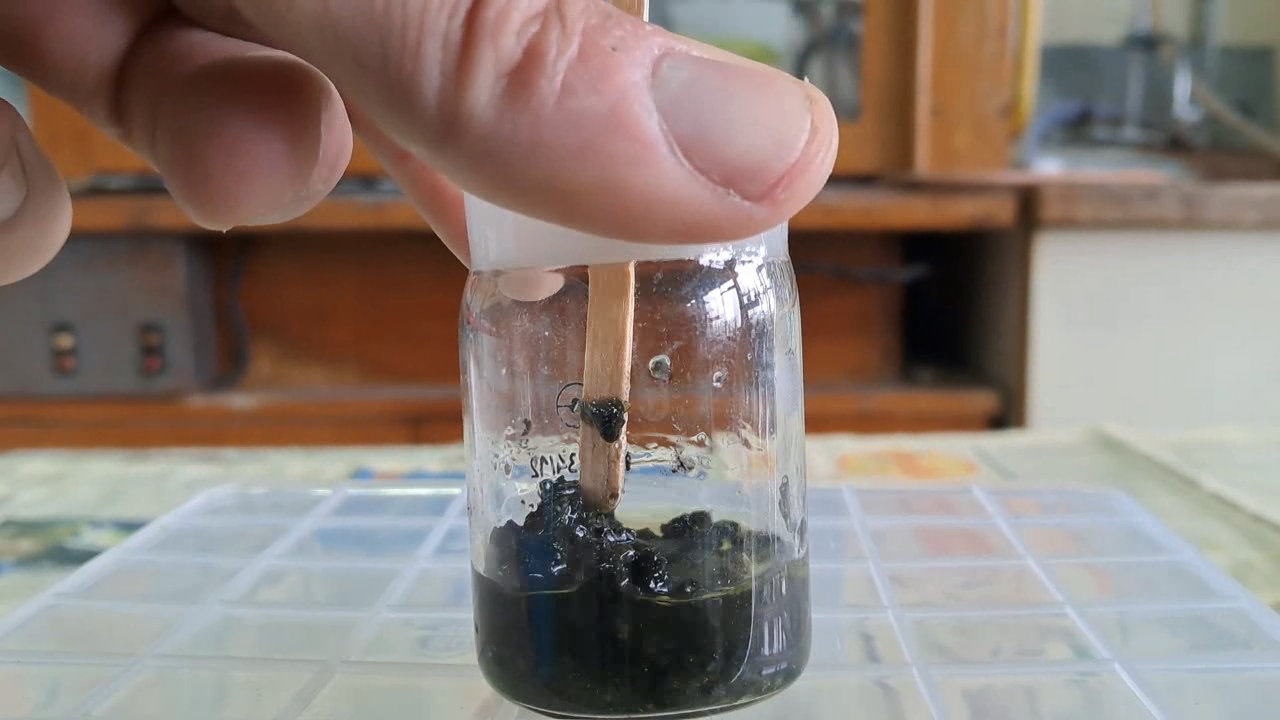
|
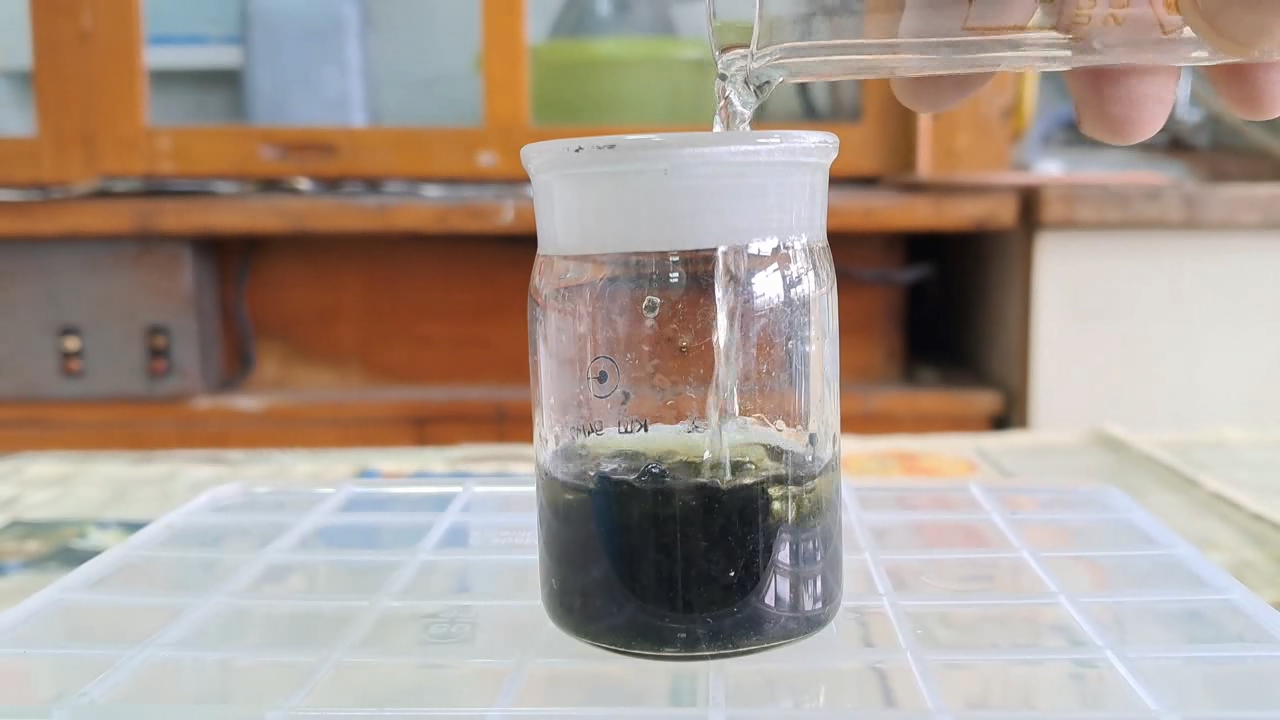
|
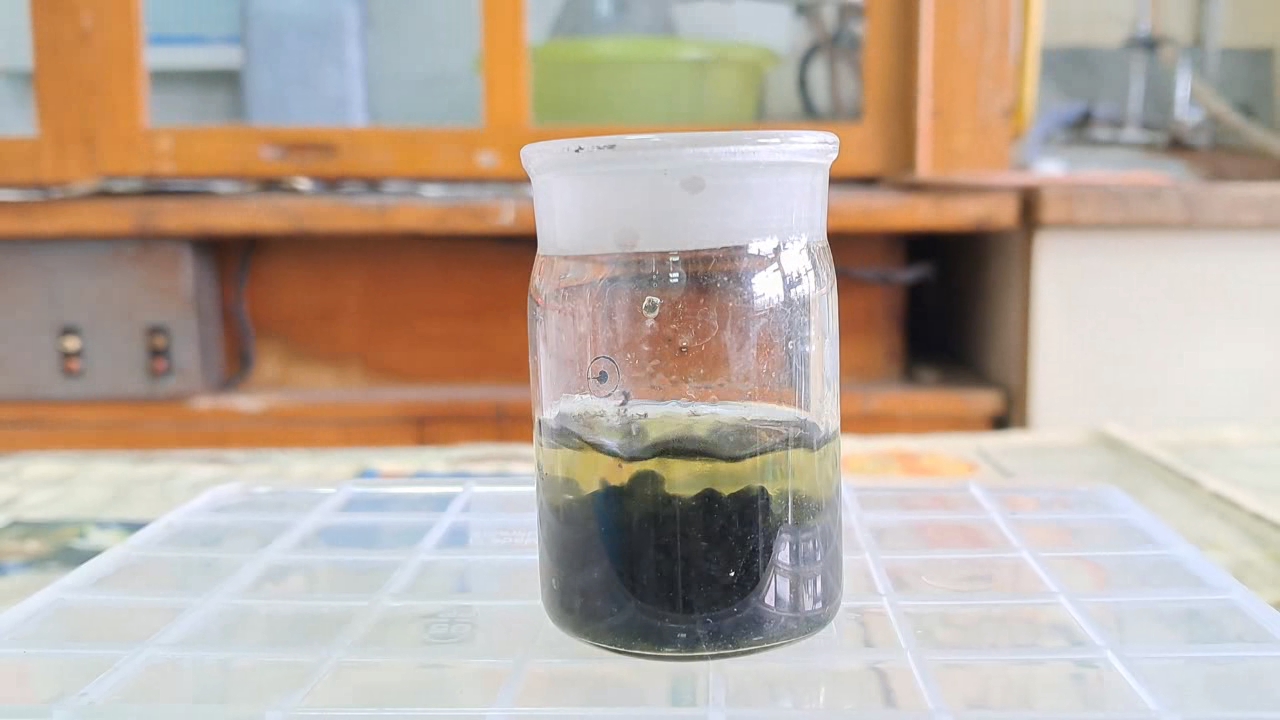
|
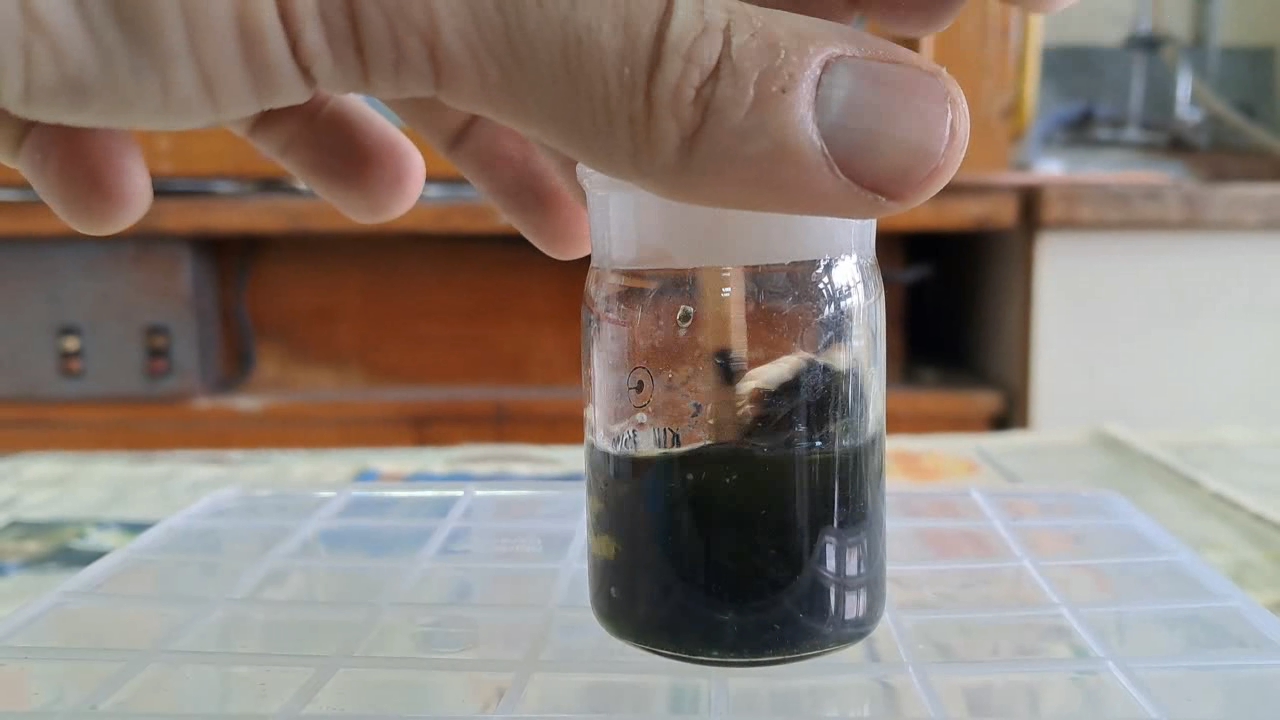
|
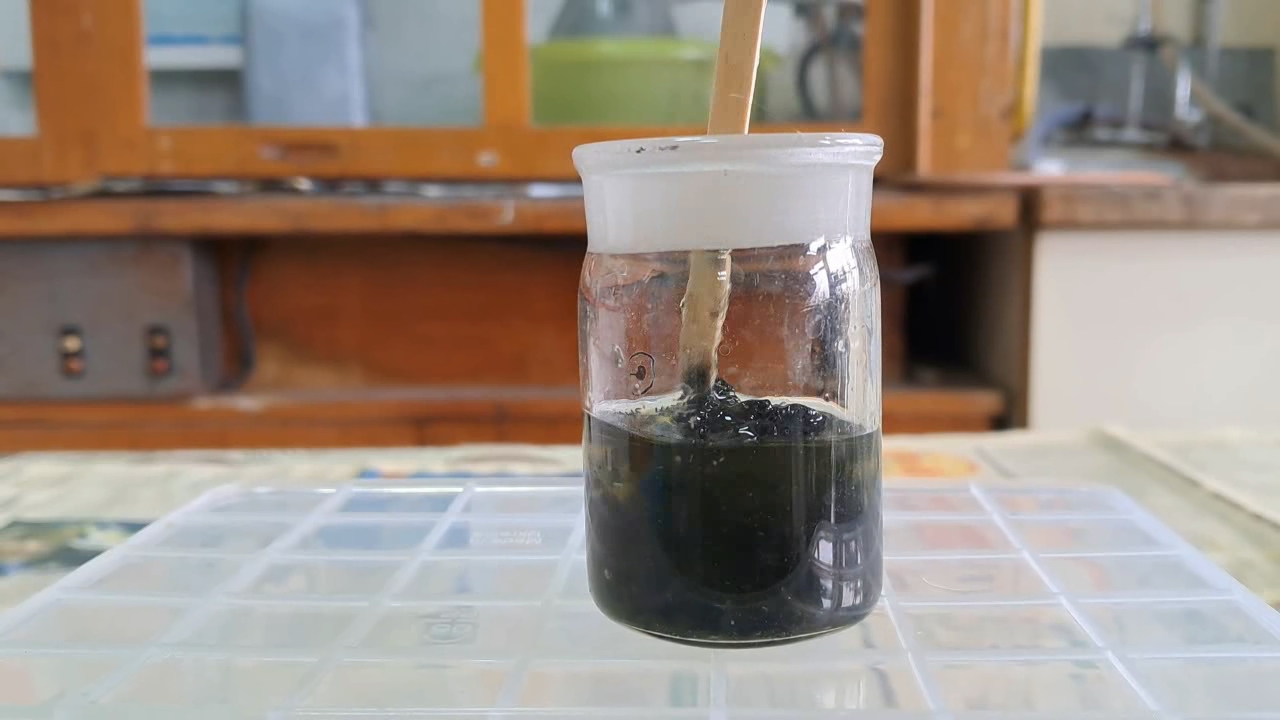
|
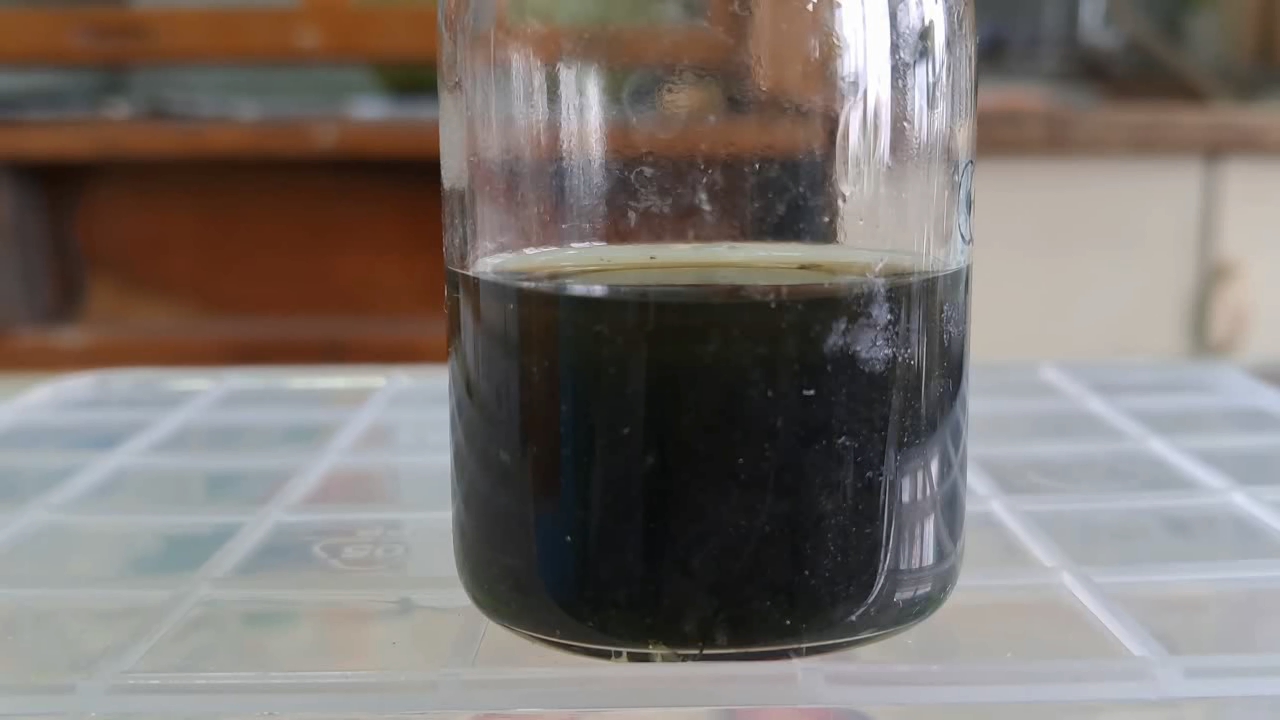
|
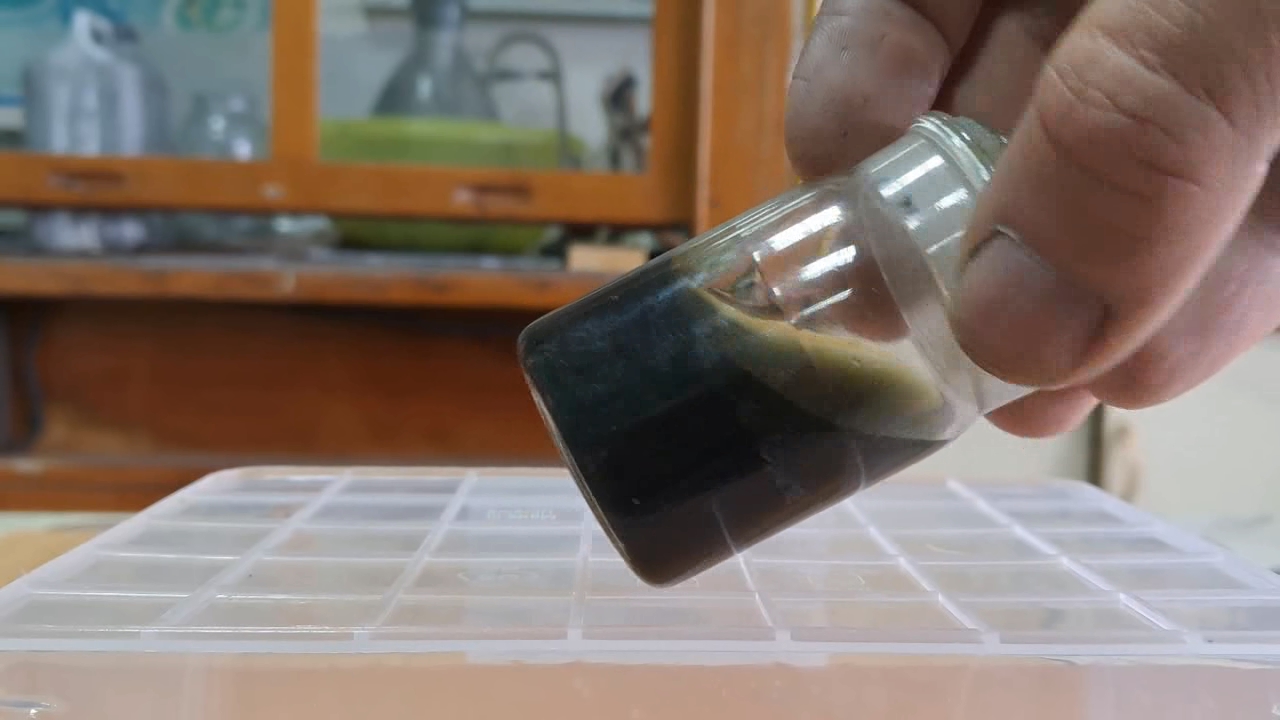
|
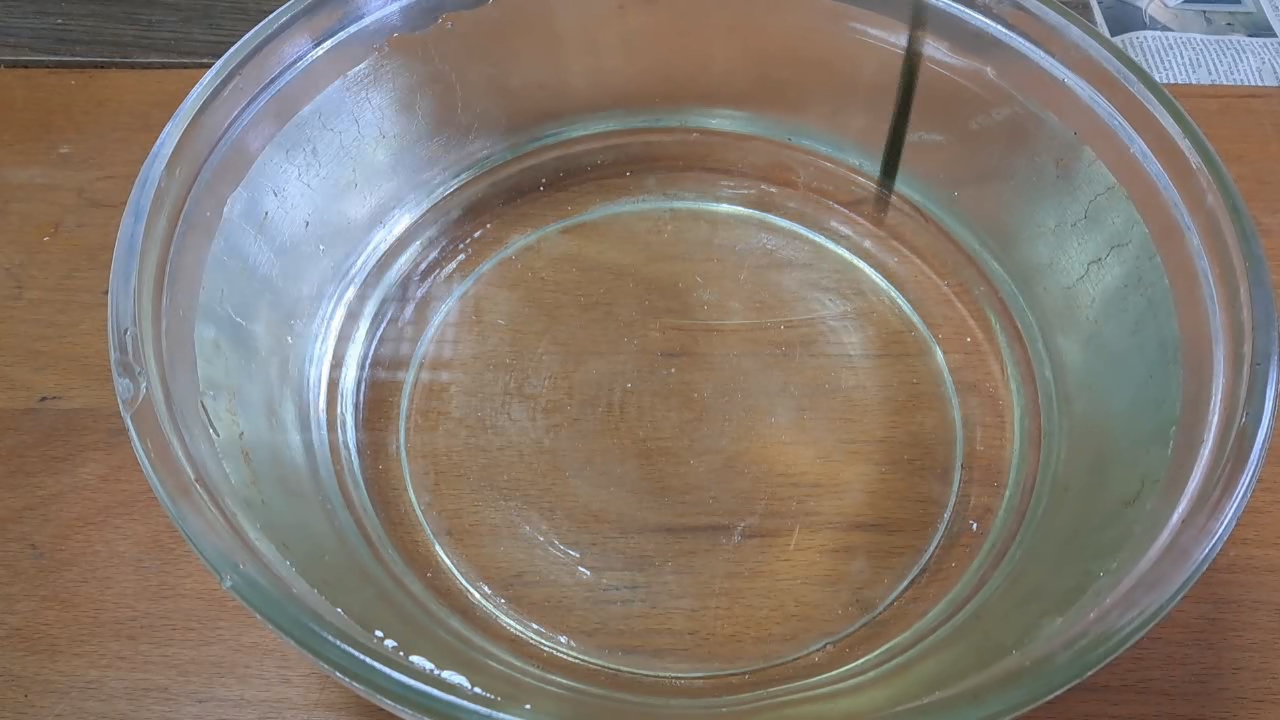
|
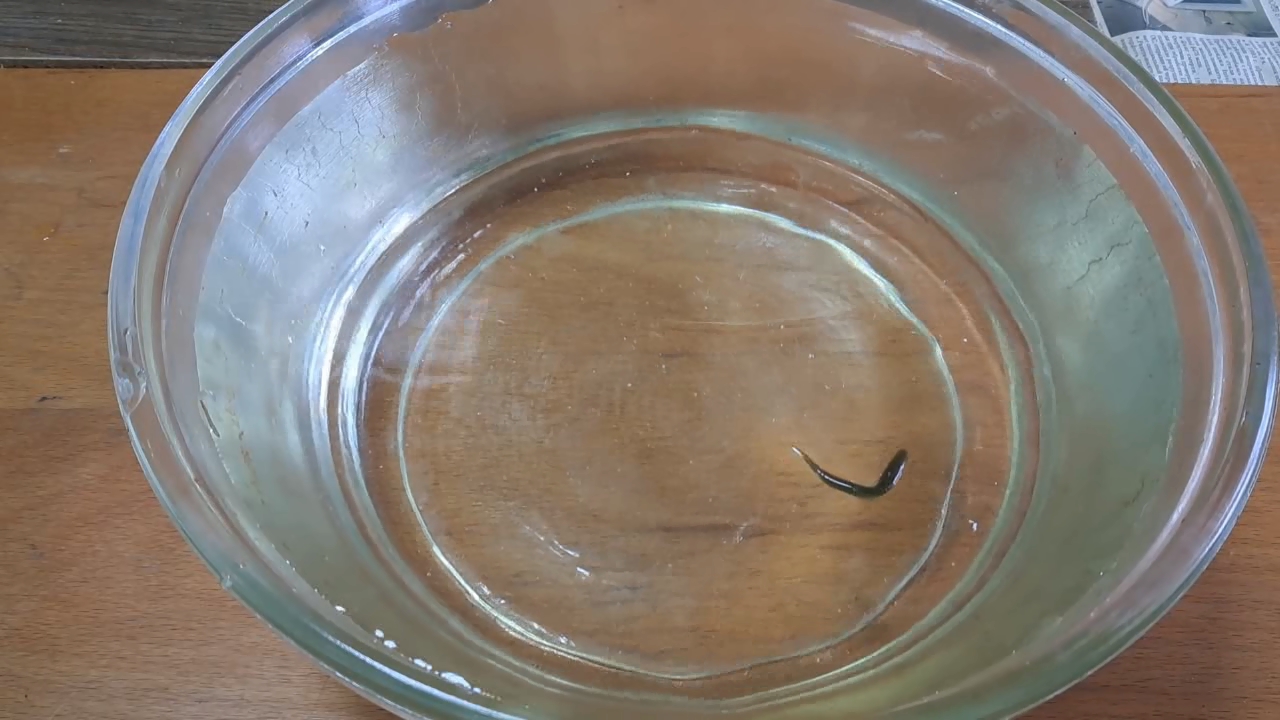
|
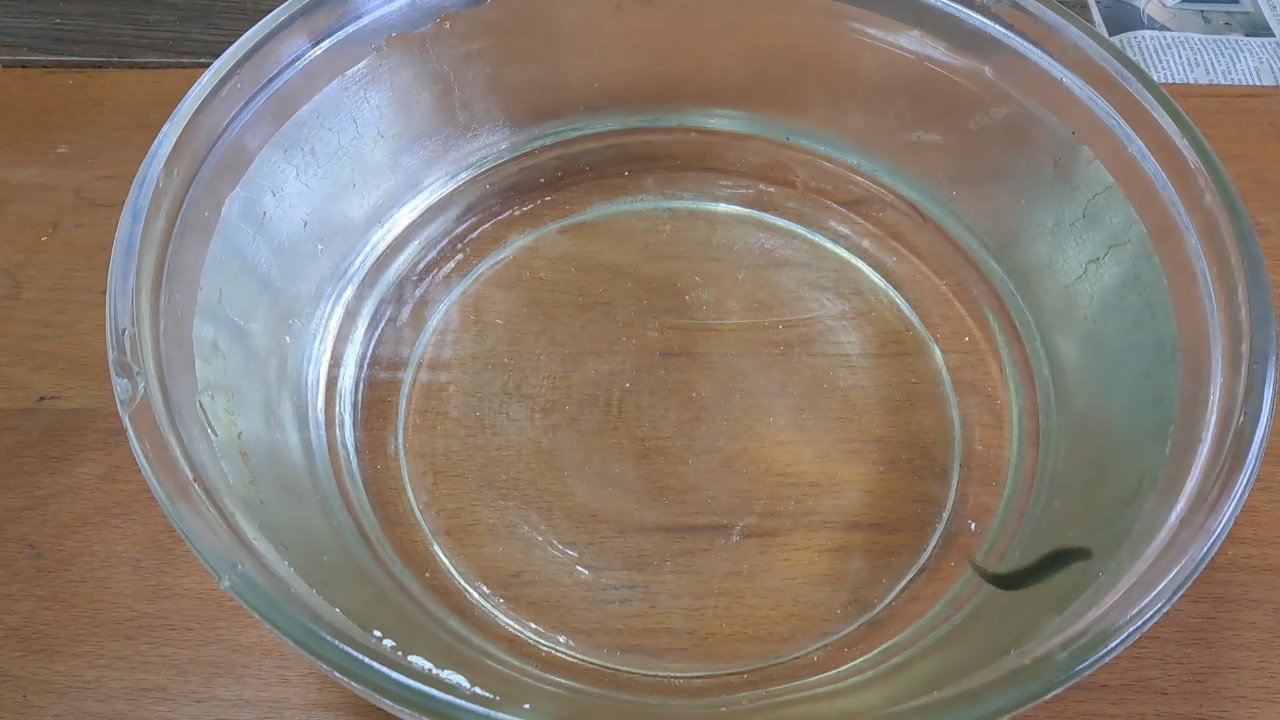
|
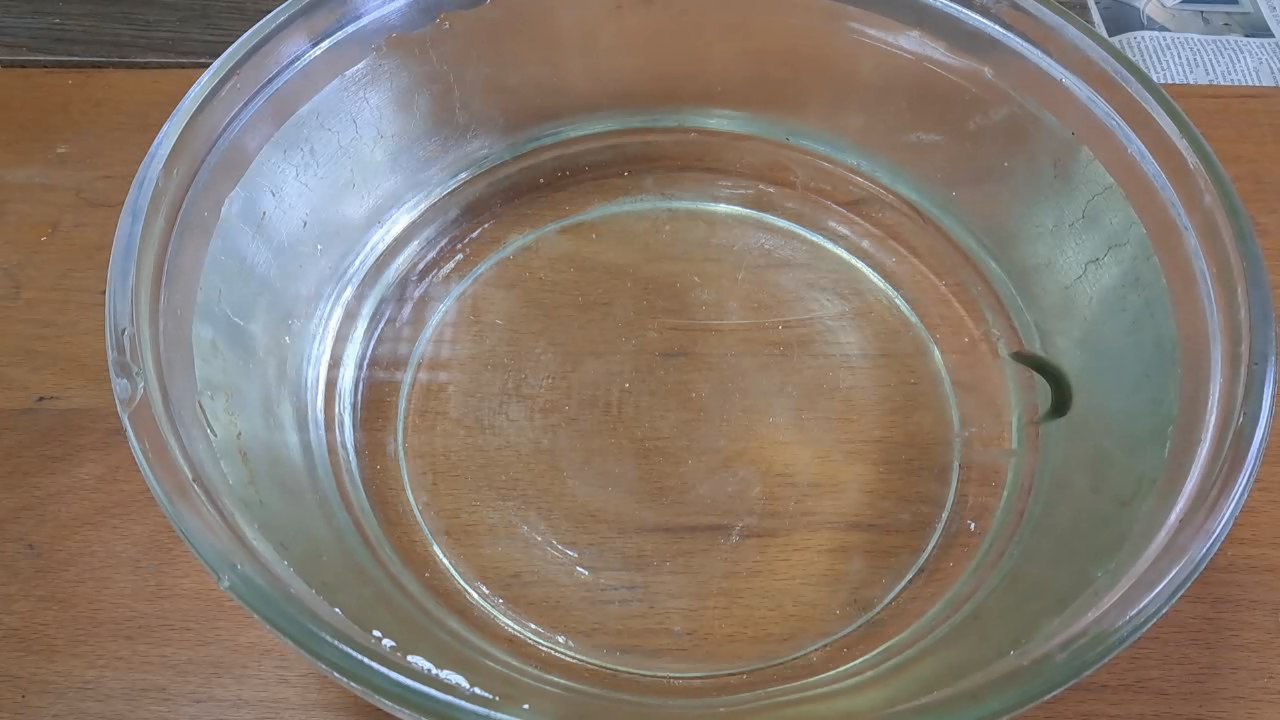
|
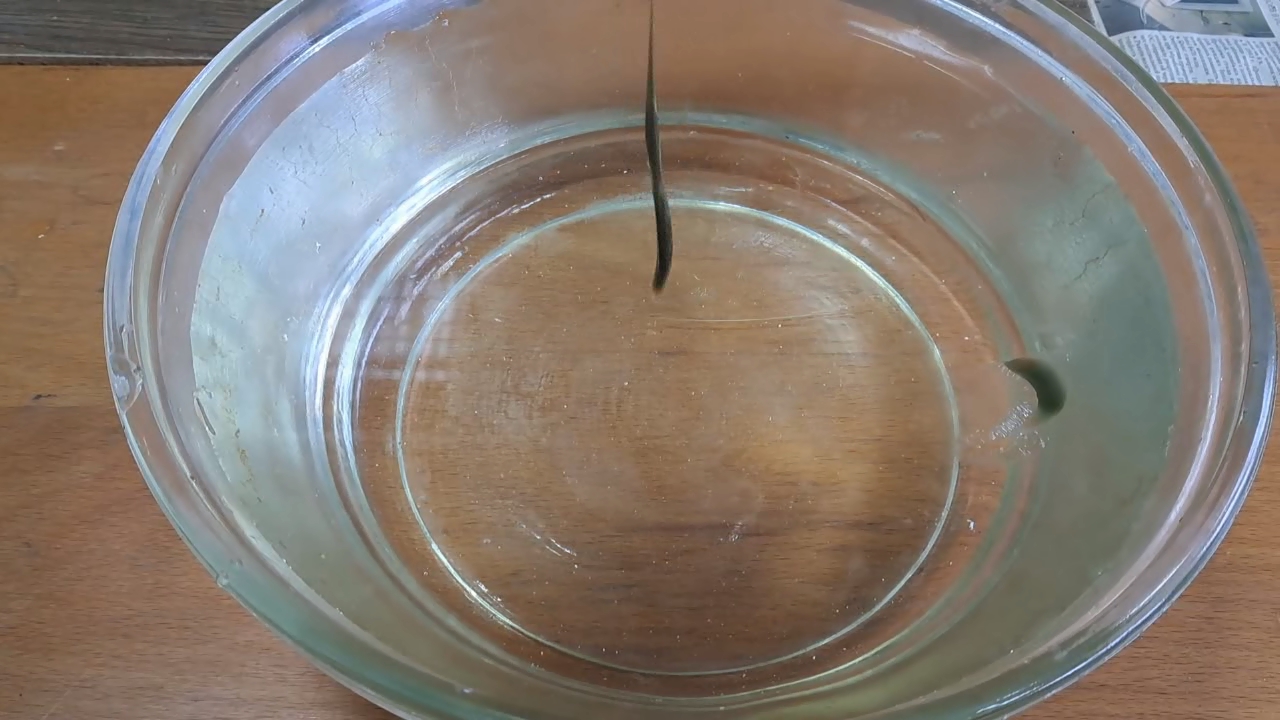
|
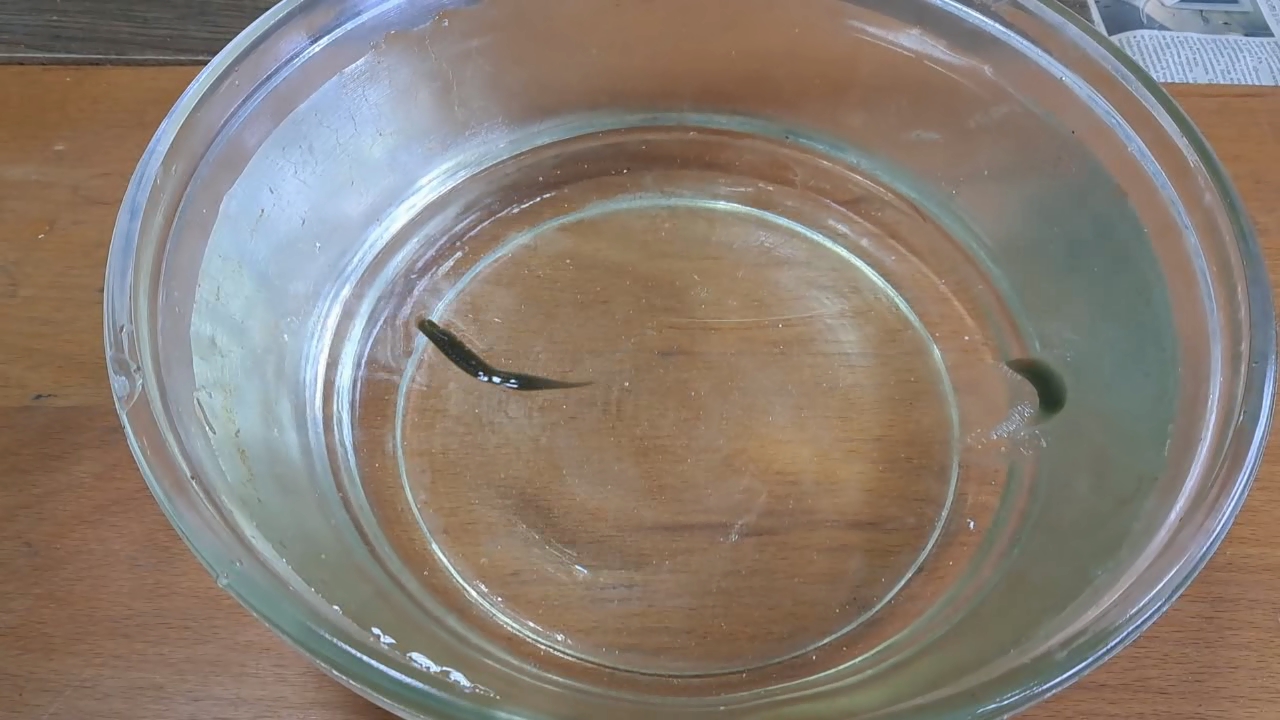
|
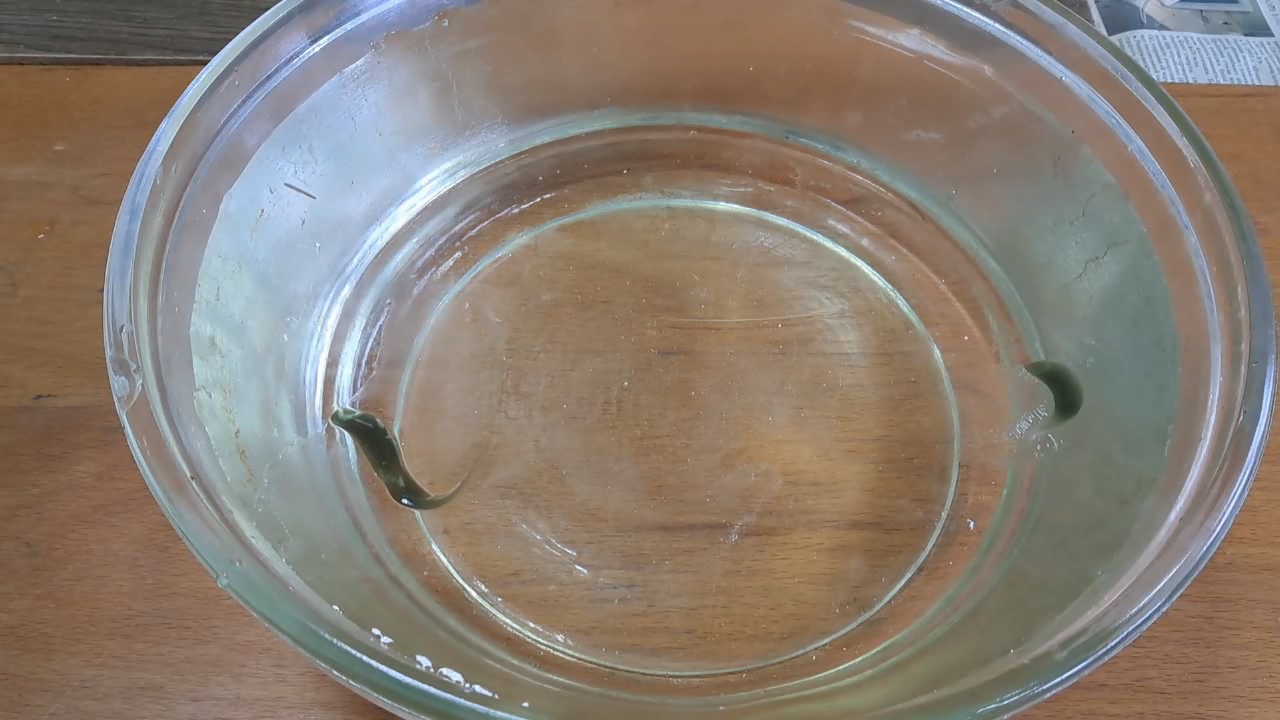
|
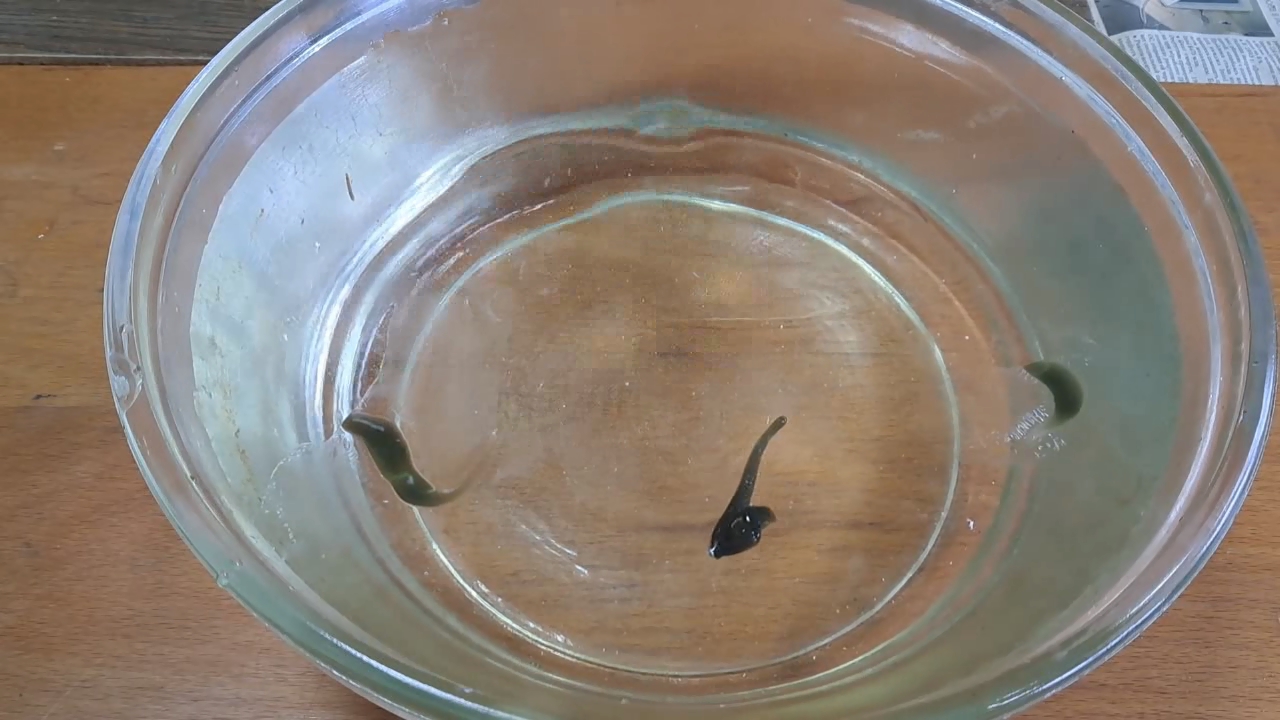
|

|

|

Dissolving Nitrocellulose in Acetone |

|
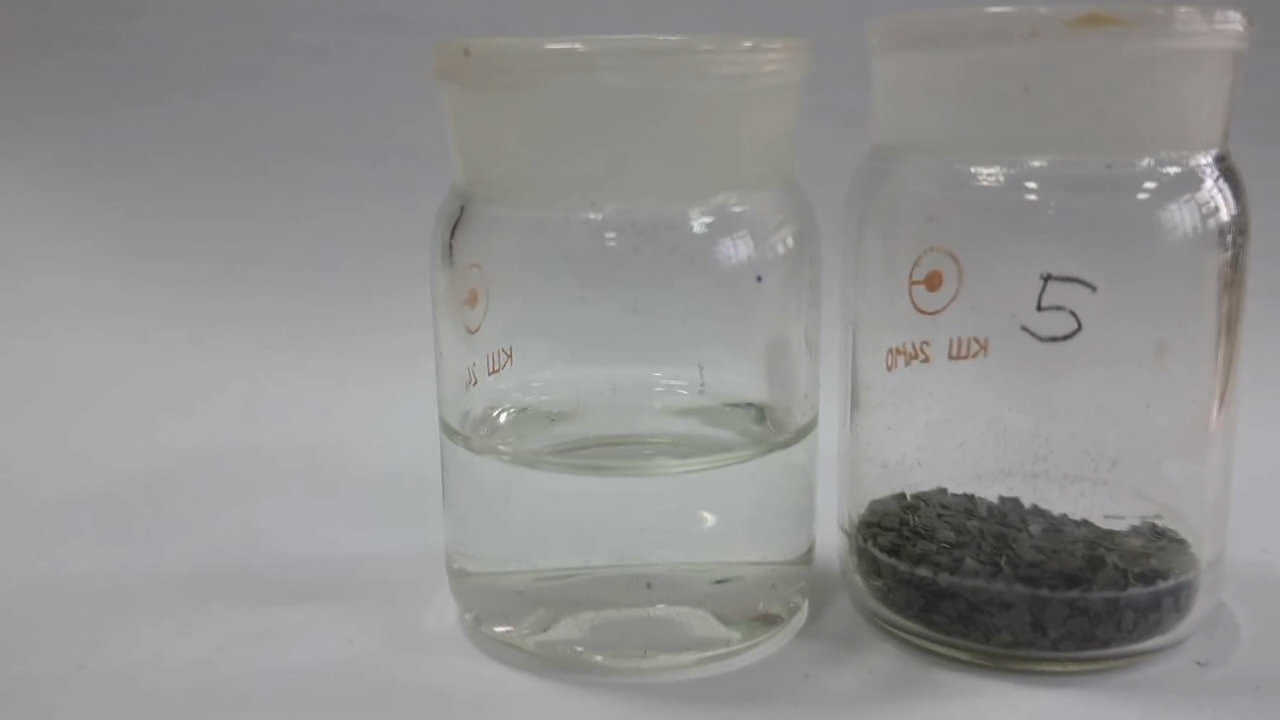
|

|
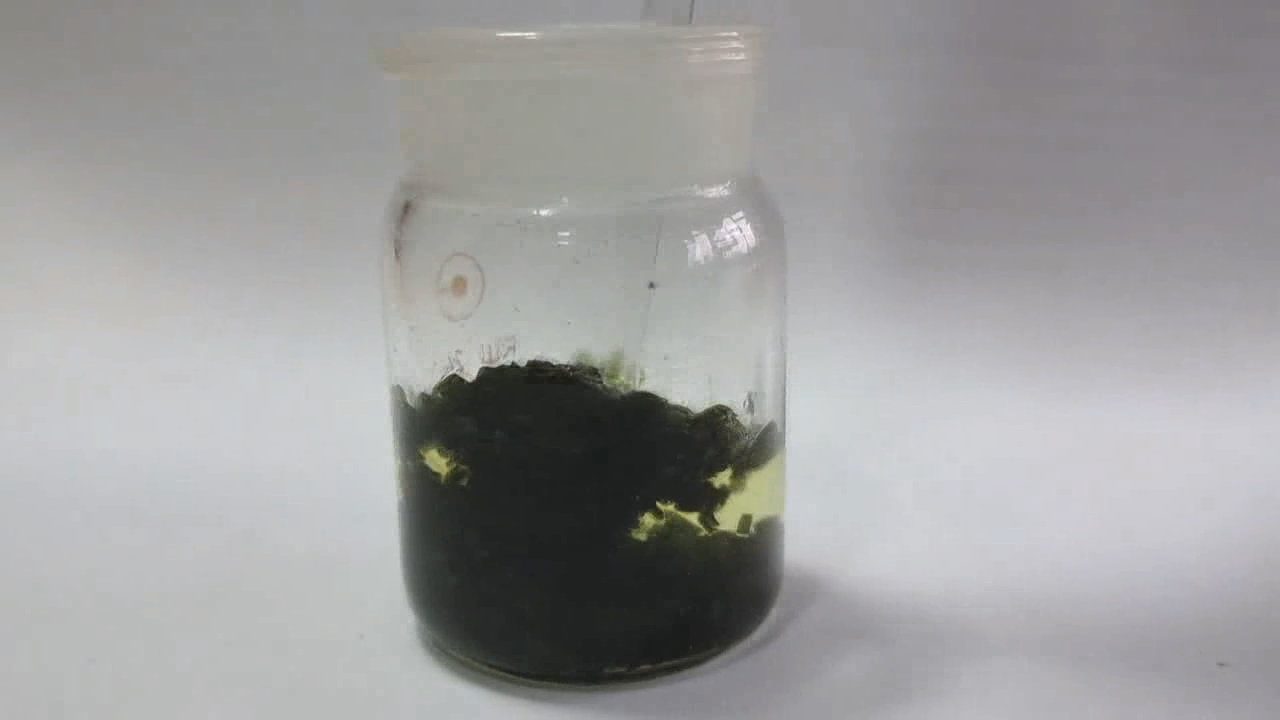
|
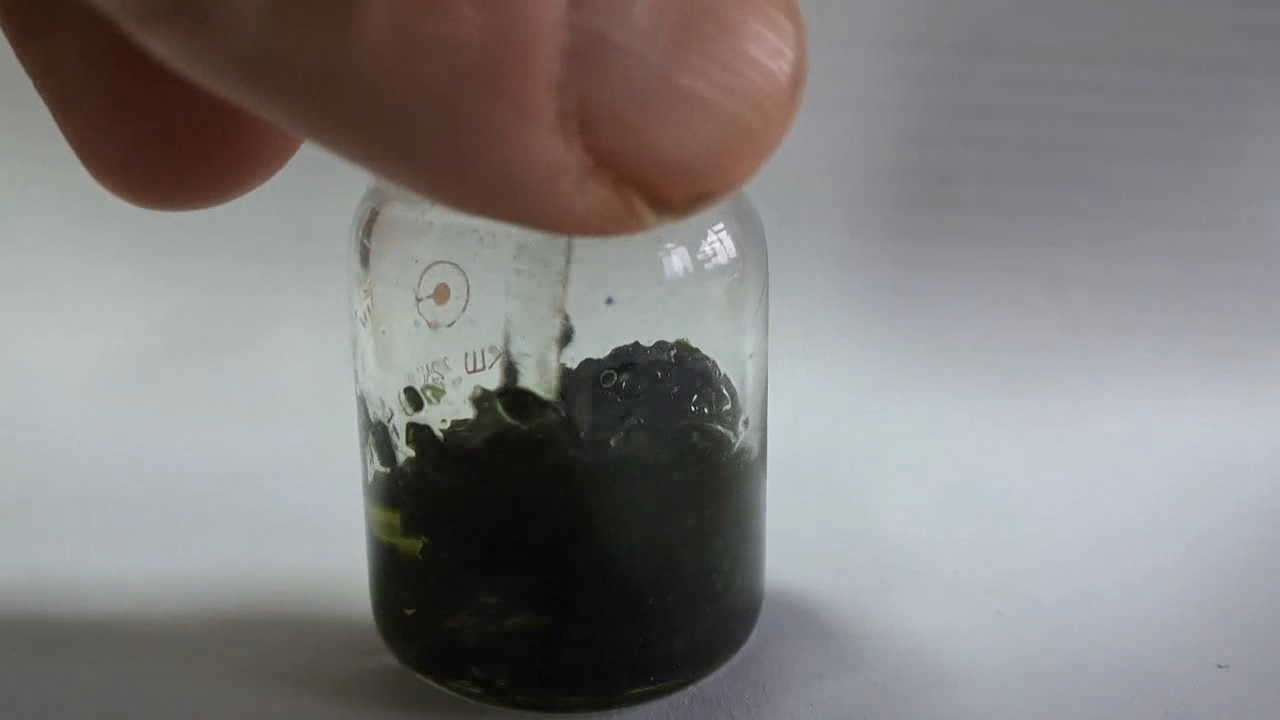
|
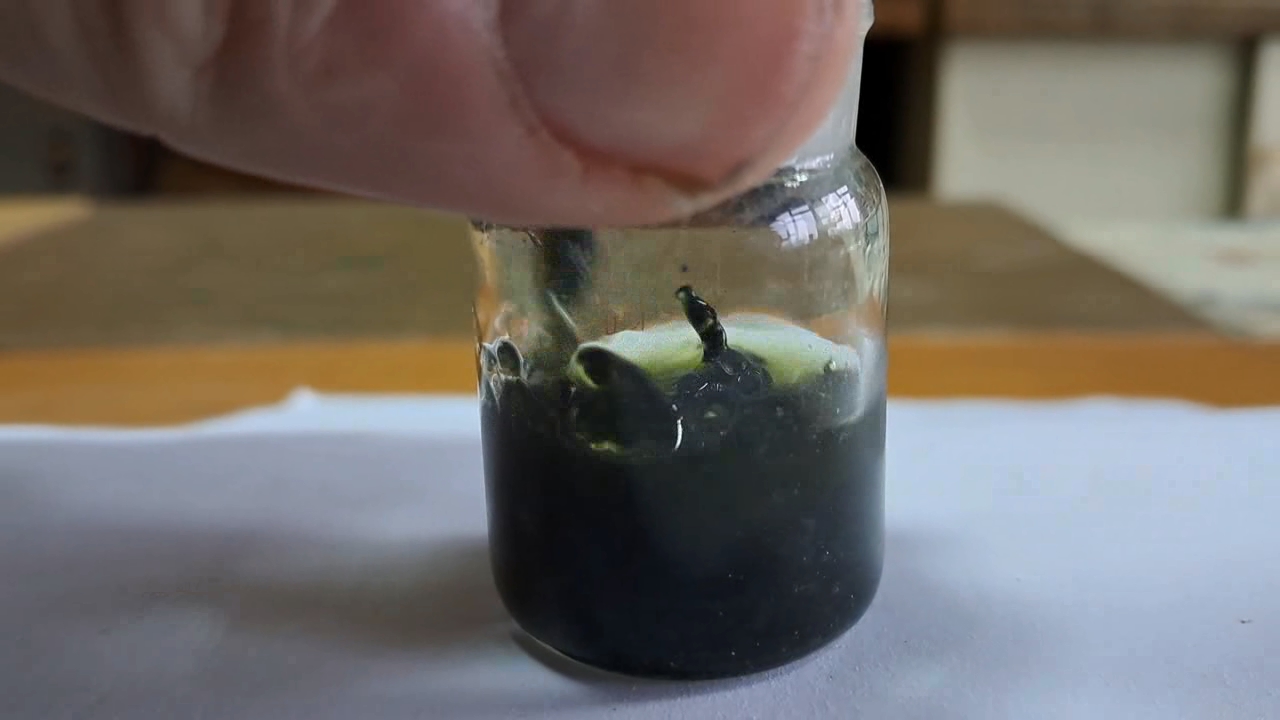
|
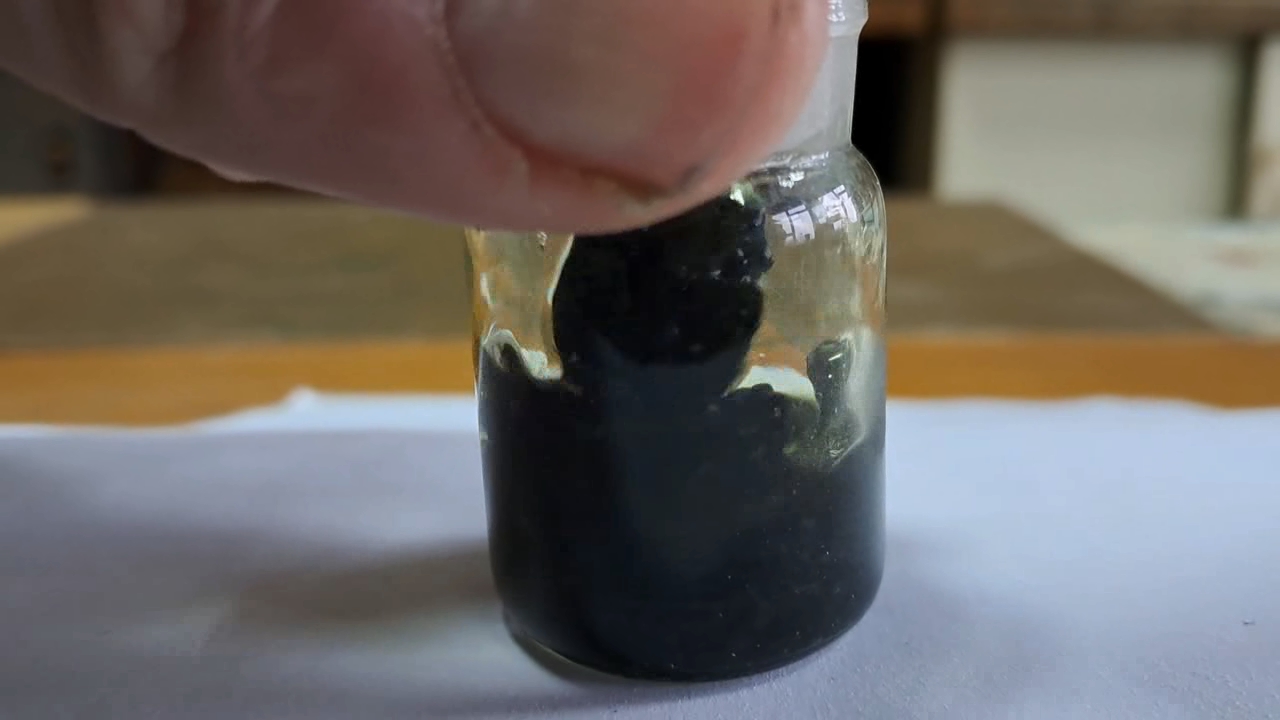
|
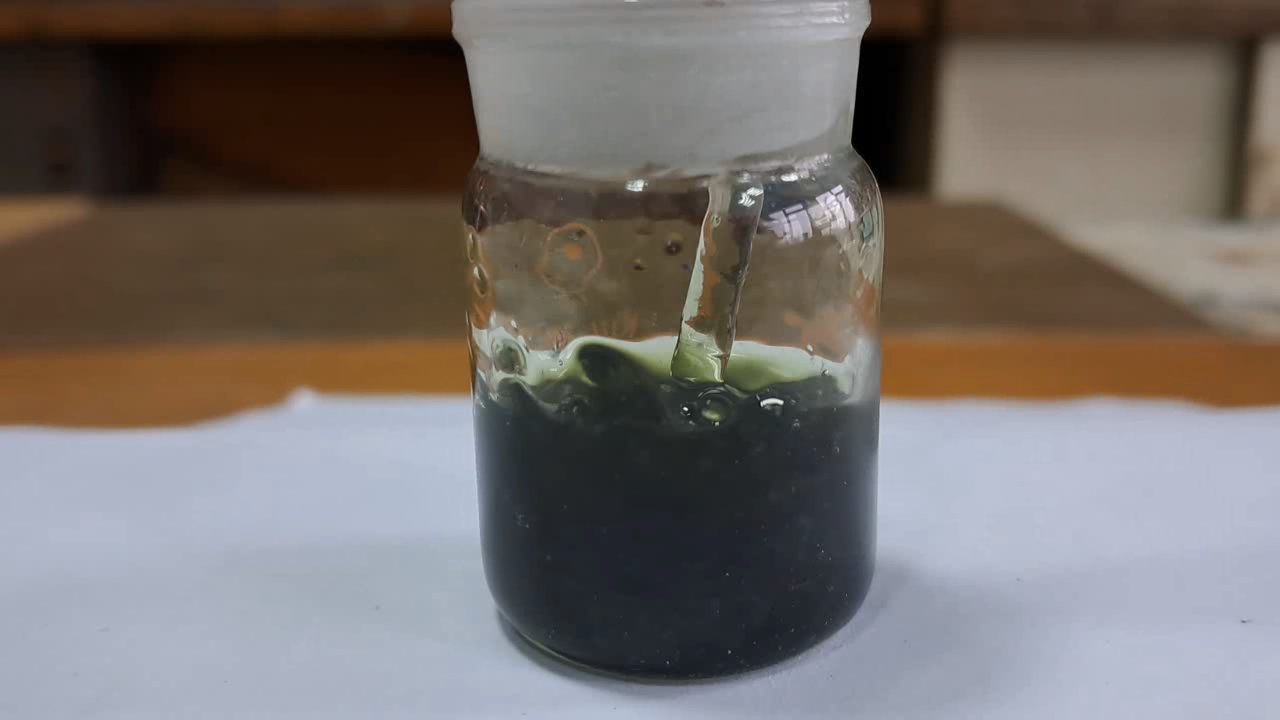
|
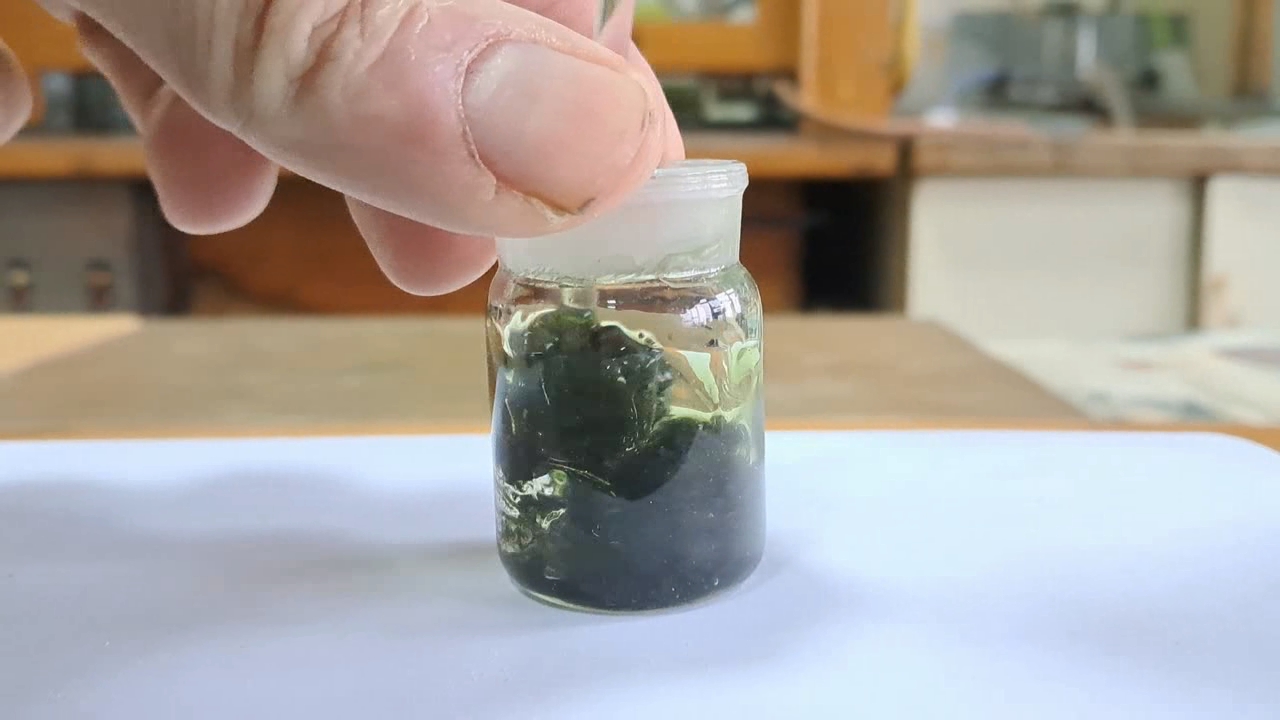
|
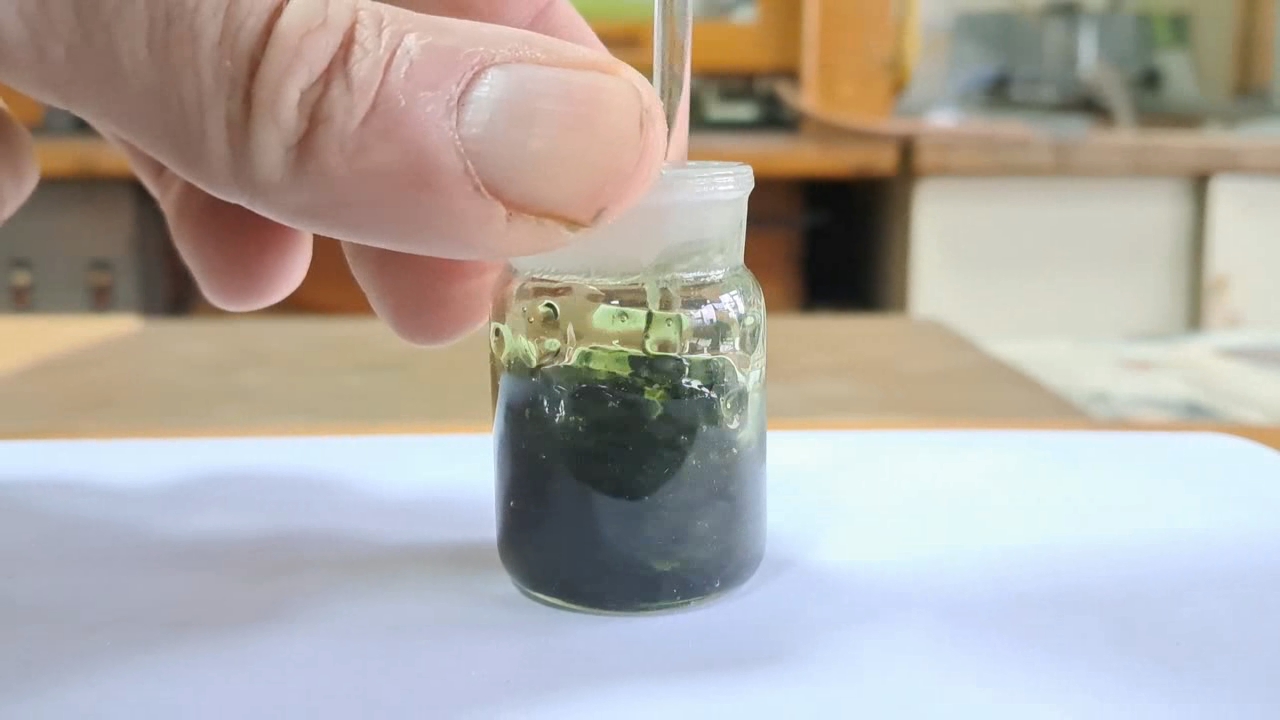
|
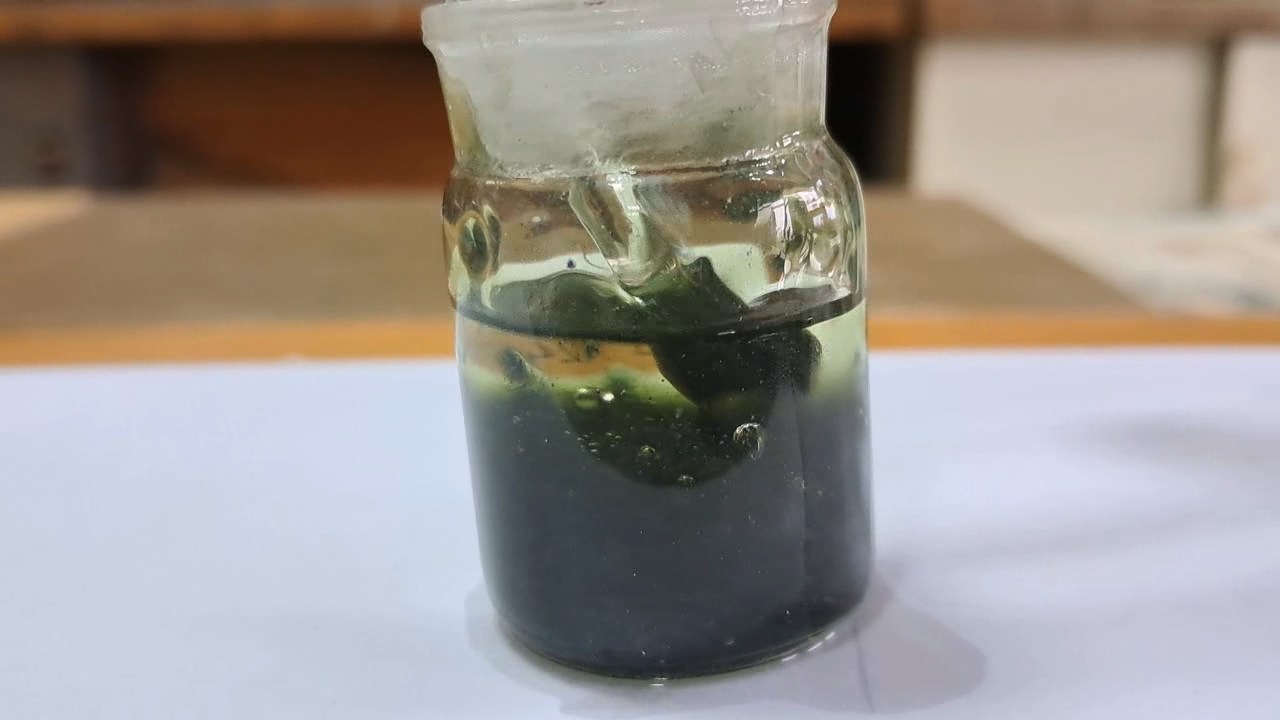
|
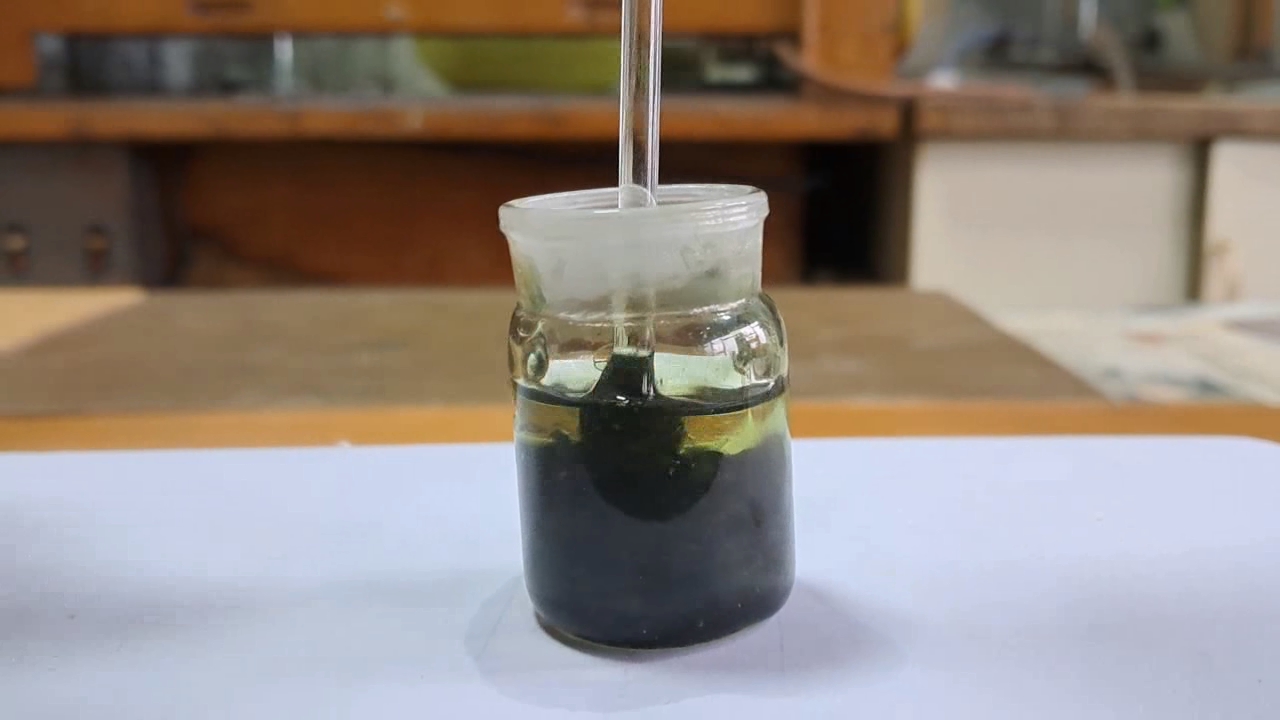
|
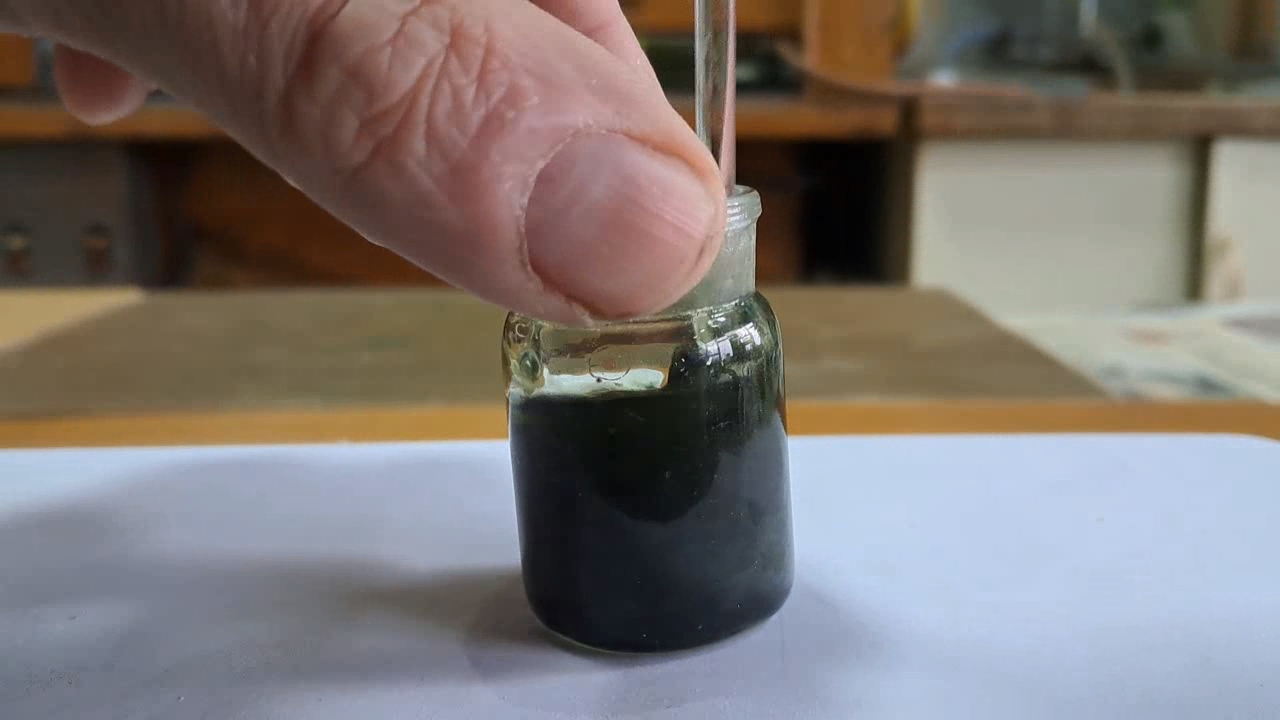
|
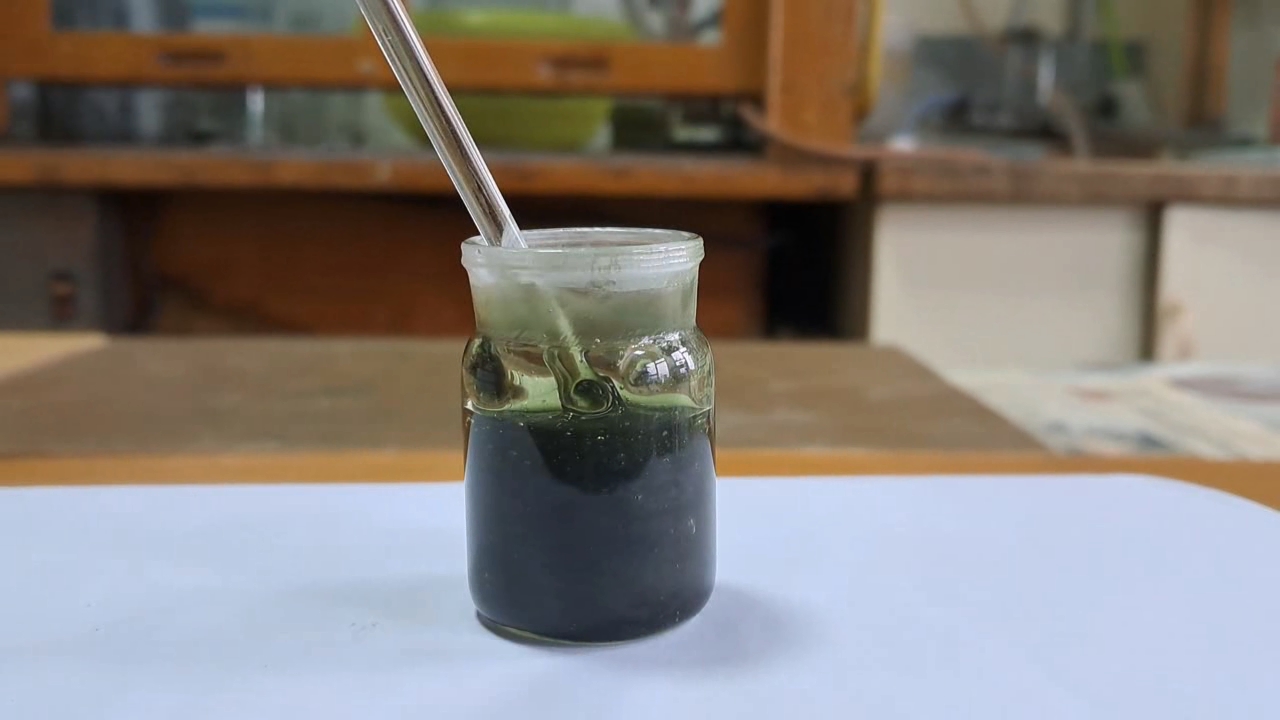
|
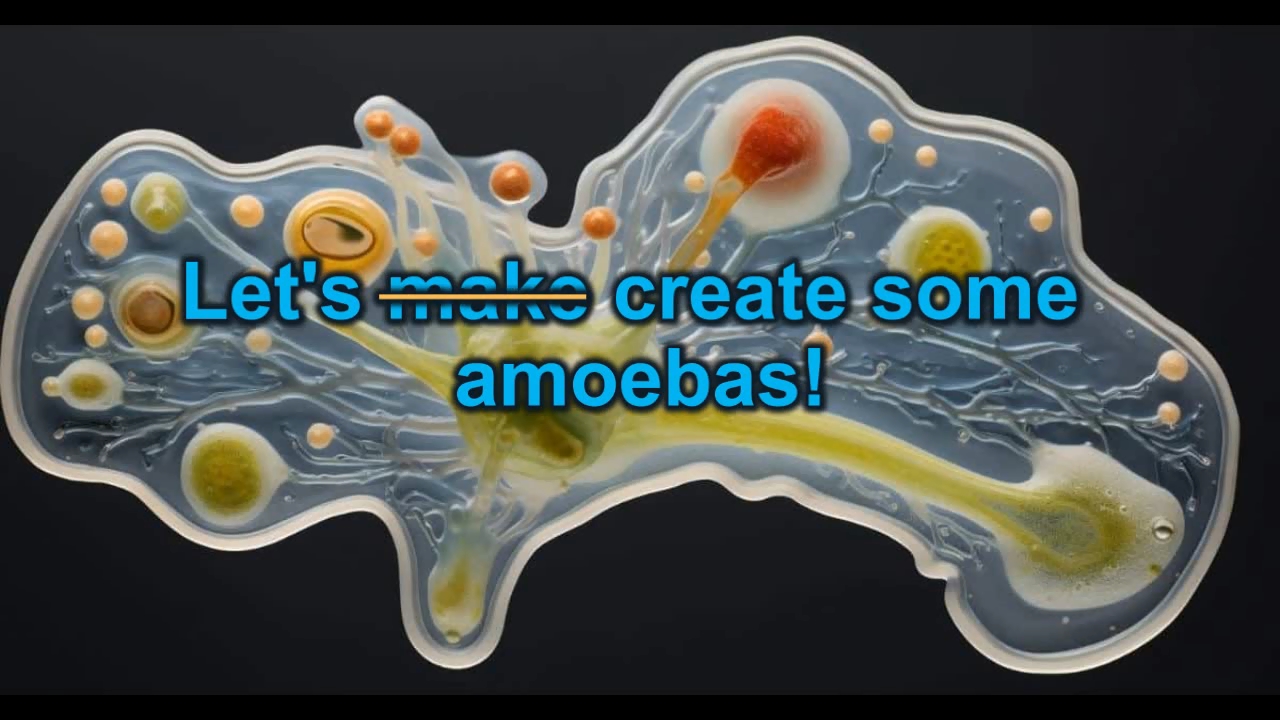
|

This is another solution of nitrocellulose (smokeless powder) prepared by one of the forum members. А это другой раствор нитроцеллюлозы (бездымный порох), приготовленный одним из участников форума |
|
Having noticed a mistake in the text, allocate it and press Ctrl-Enter
Nitrocellulose Amoeba (Successful Experiment) - Part 7
I poured water into the crystallizer and attempted to drop the obtained nitrocellulose solution in acetone onto its surface. However, a problem arose: the solution was too viscous to be drawn with a pipette. I used a wooden stick to take some of the solution and then held it over the water, allowing drops of the nitrocellulose solution to fall onto the surface. Instead of forming drops, a stream of liquid flowed from the stick. Consequently, instead of an "amoeba," I obtained thin, elongated formations resembling worms. These "worms" moved quickly and actively changed direction. However, after about a minute, they stopped because the acetone passed into the water too quickly.
Нитроцеллюлозная амеба (успешный эксперимент) - часть 7 To create proper drops, I had to manipulate two wooden sticks simultaneously. (I refer to them as 'drops,' although they resembled something between a liquid drop and a solid fragment.) These drops moved rapidly on the surface of the water, rotating and frequently changing direction. Their movement lasted for about five minutes, gradually slowing down. To improve the procedure and enable the use of a pipette, I diluted the remaining nitrocellulose solution, which was half of the original volume, by adding an equal volume of acetone and mixed it until a homogeneous liquid formed. This resulted in a less viscous solution. I drew the diluted solution with a pipette and dropped it onto the water's surface in the crystallizer. The result was negative. The "amoebas" moved quickly but not for long, as a thin nitrocellulose film formed around them, which slowed their movement. A similar effect was observed when using a solution made from diluted (surrogate) acetone. Therefore, to create artificial "amoebas," both the purity of the acetone and the viscosity of the solution (which depends on the nitrocellulose concentration) are crucial. Increasing concentration causes an increase in viscosity. If the viscosity is too low, the solution spreads over the water's surface, forming a film. I added another 1 g of smokeless powder to the solution and stirred periodically until the nitrocellulose dissolved completely. The viscosity increased significantly. This time, I used a large plastic tray filled with water instead of a crystallizer to increase the surface area. When I dropped the nitrocellulose solution into the water, the drops began moving on the surface like giant amoebas, continuing for about five minutes. A colleague suggested adding dye to the nitrocellulose solution to visualize the jets of acetone "shooting" from the drops into the water. This suggestion frustrated me, as we lacked the necessary dye in the lab. Although acetone-soluble dyes are common and easily accessible, I didn't have any on hand, and my colleague didn't consider this beforehand. Instead of arguing, I politely suggested he search for a suitable substance in the room. After a few minutes, he returned with... a varnish intended for protecting electronics from corrosion. Why he thought it would work as a dye, I don't know - he couldn't explain it either. I recalled reading an article in my childhood in the journal Chemistry and Life about similar "amoebas." At that time, it was doubly exciting because I first created the "amoebas" myself and later read about them in the magazine. The article's author suggested using dye from a ballpoint pen cartridge to visualize the acetone "jets." The author hadn't tested this himself but proposed it as a possible solution. I found an old blue pen cartridge, cut it into pieces, and poured a small amount of acetone over it. The acetone turned dark blue. I added this blue solution to the nitrocellulose solution and stirred until it became uniformly dark blue. The resulting "amoebas" from the blue solution moved perfectly; however, their "jets" were colorless, as the blue dye didn't pass into the water. Interestingly, the original nitrocellulose solution was dark green (the smokeless powder contained a colored substance), but neither the green nor the blue dye transferred to the water alongside the acetone. Thus, the experiment yielded a positive result: the artificial "amoebas" moved for about five minutes. Several new ideas emerged during the experiment, which will be discussed in future parts of the article. |
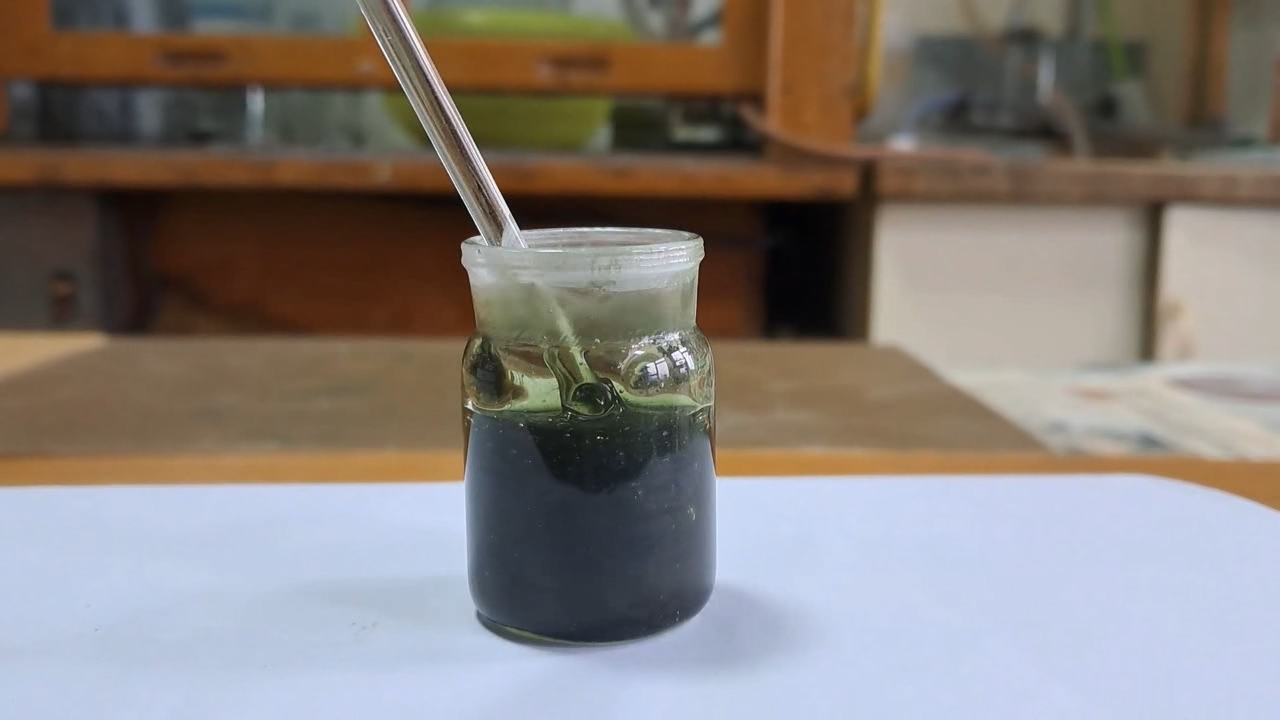
Nitrocellulose Amoeba (Successful Experiment) |
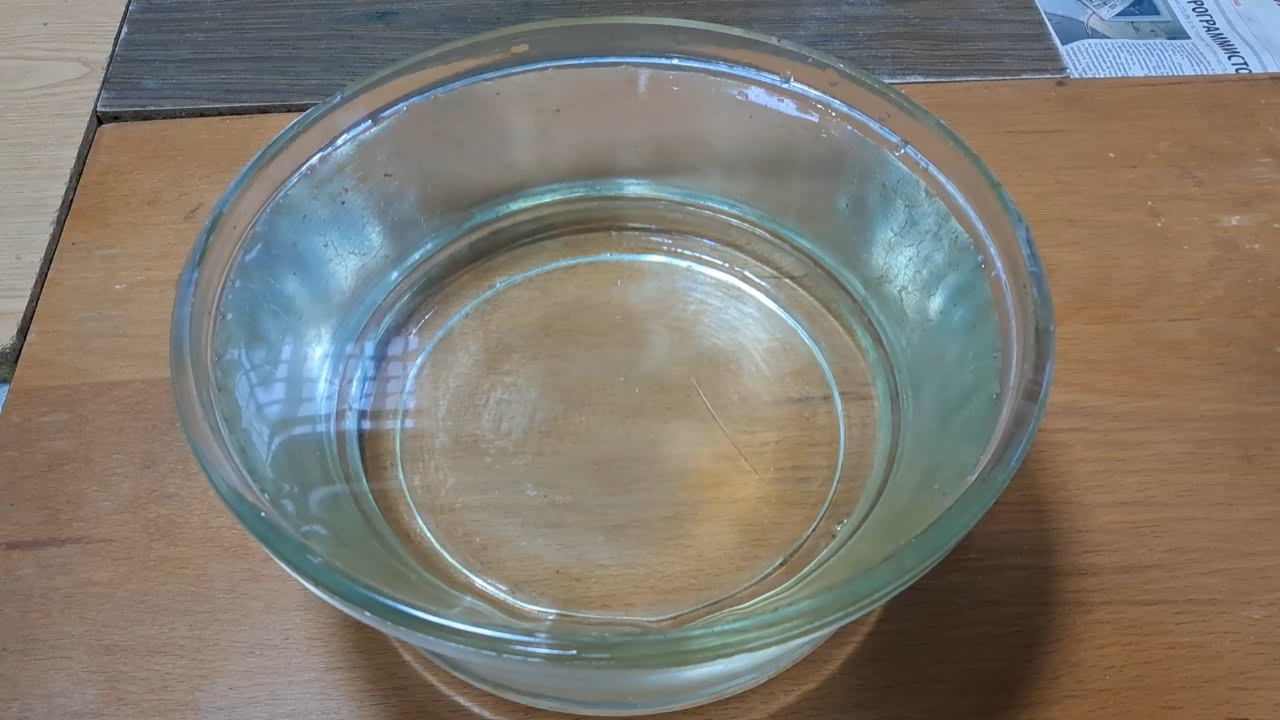
|
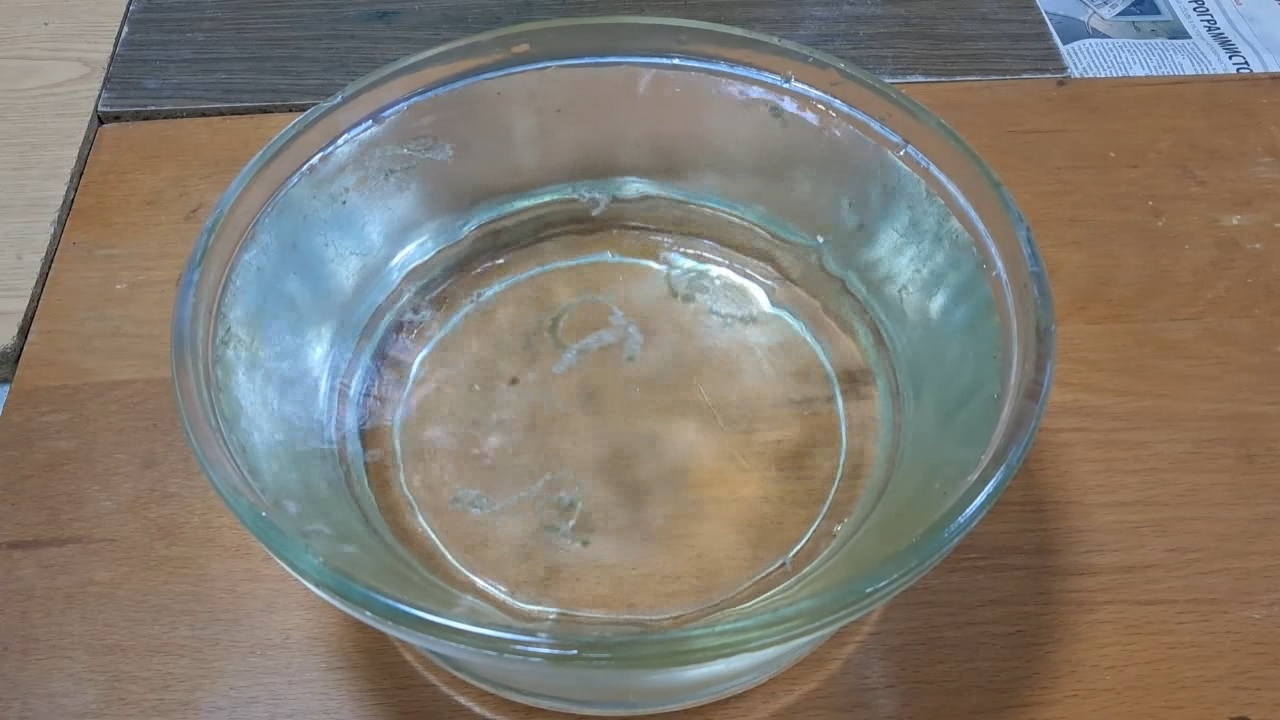
|

|
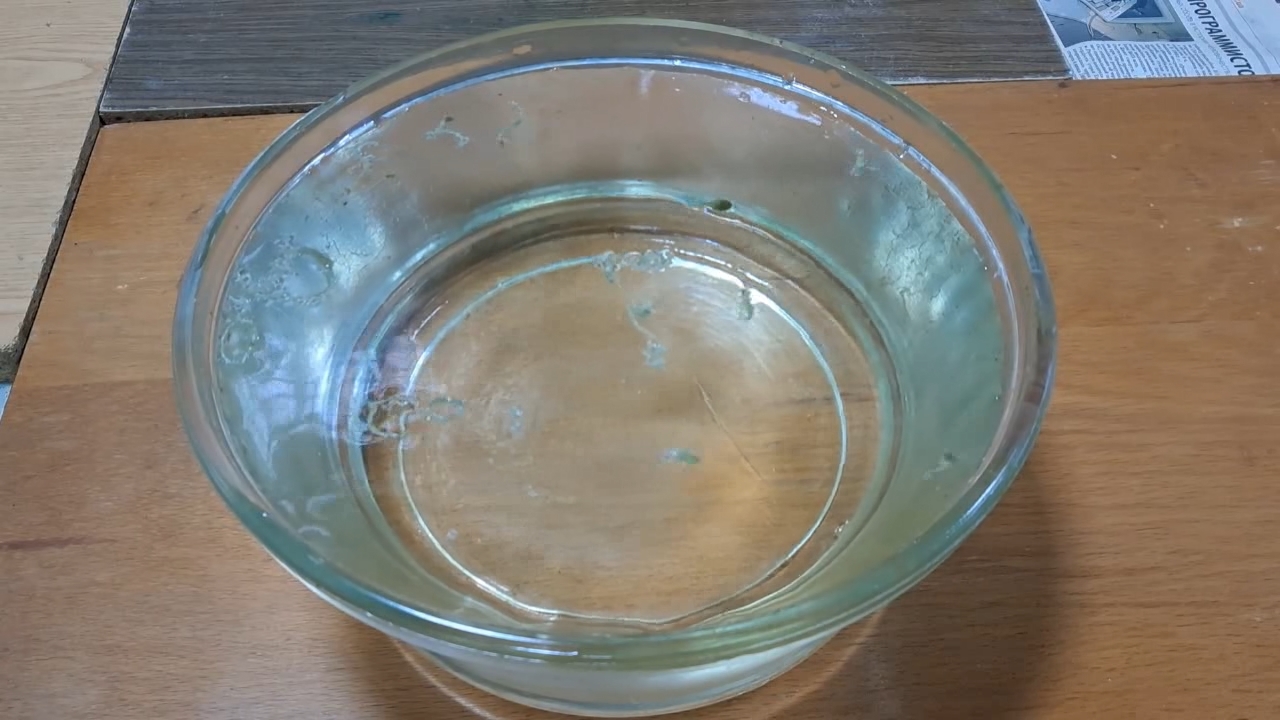
|
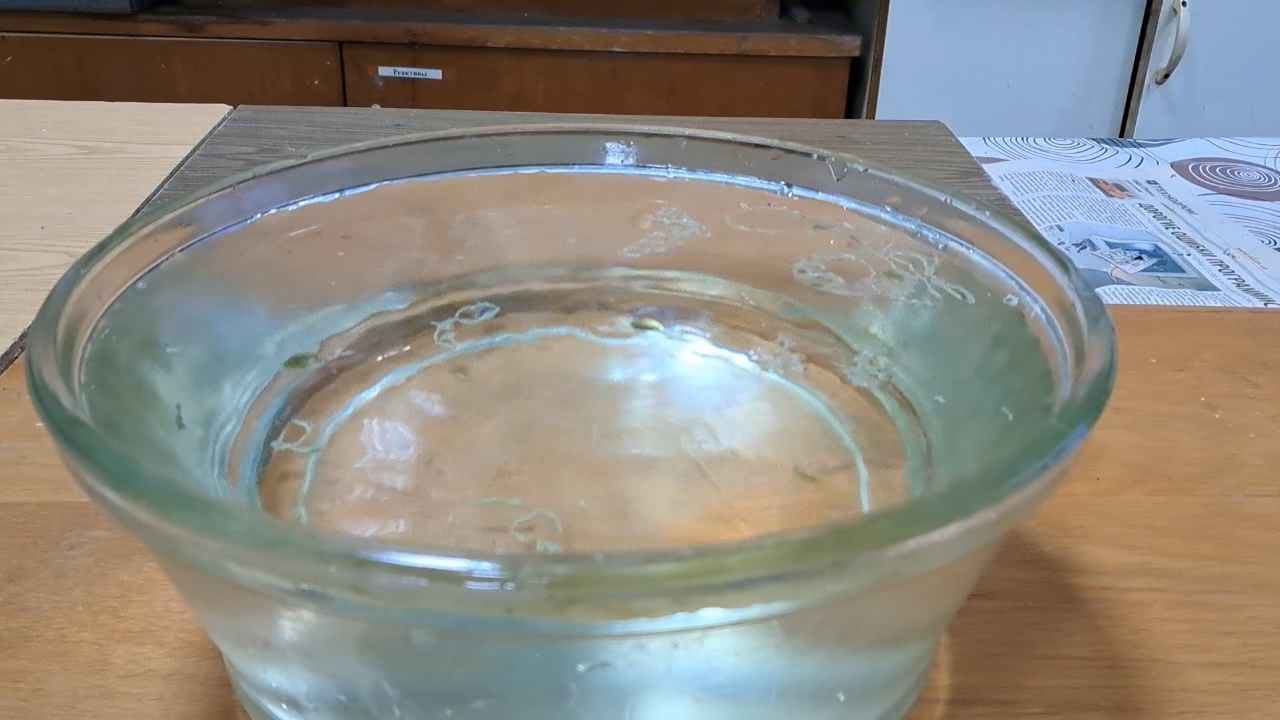
|
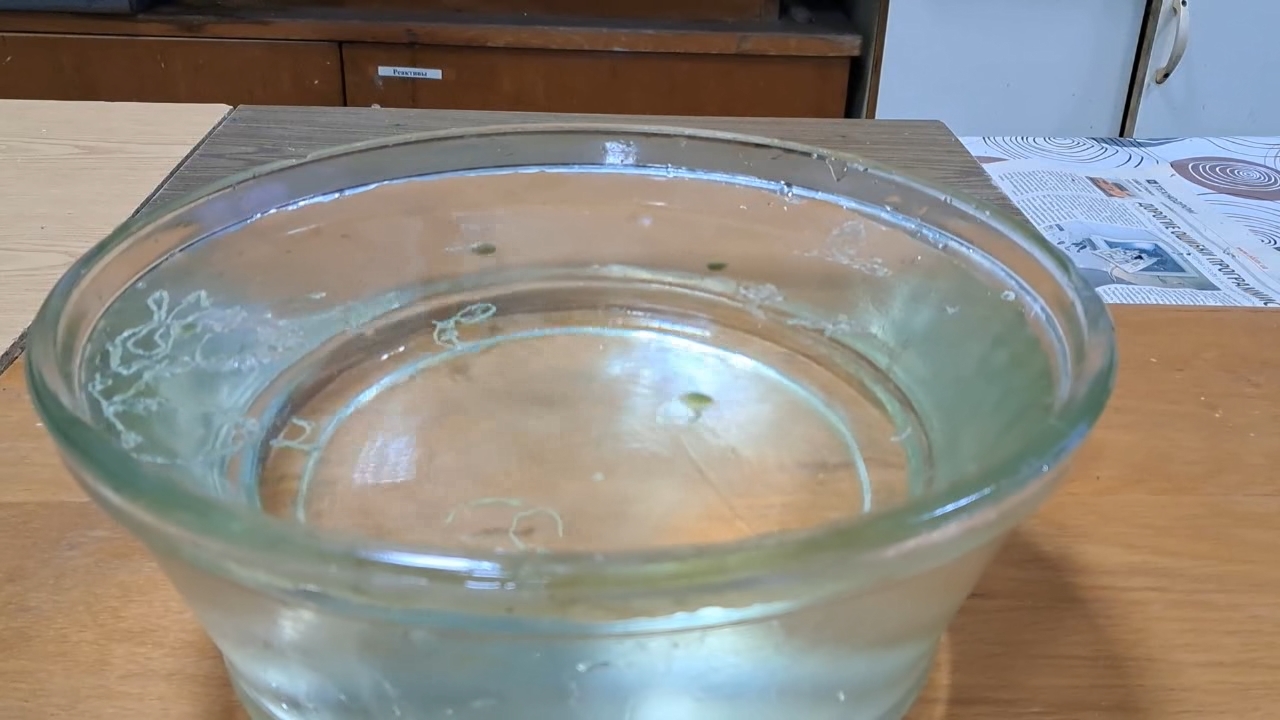
|
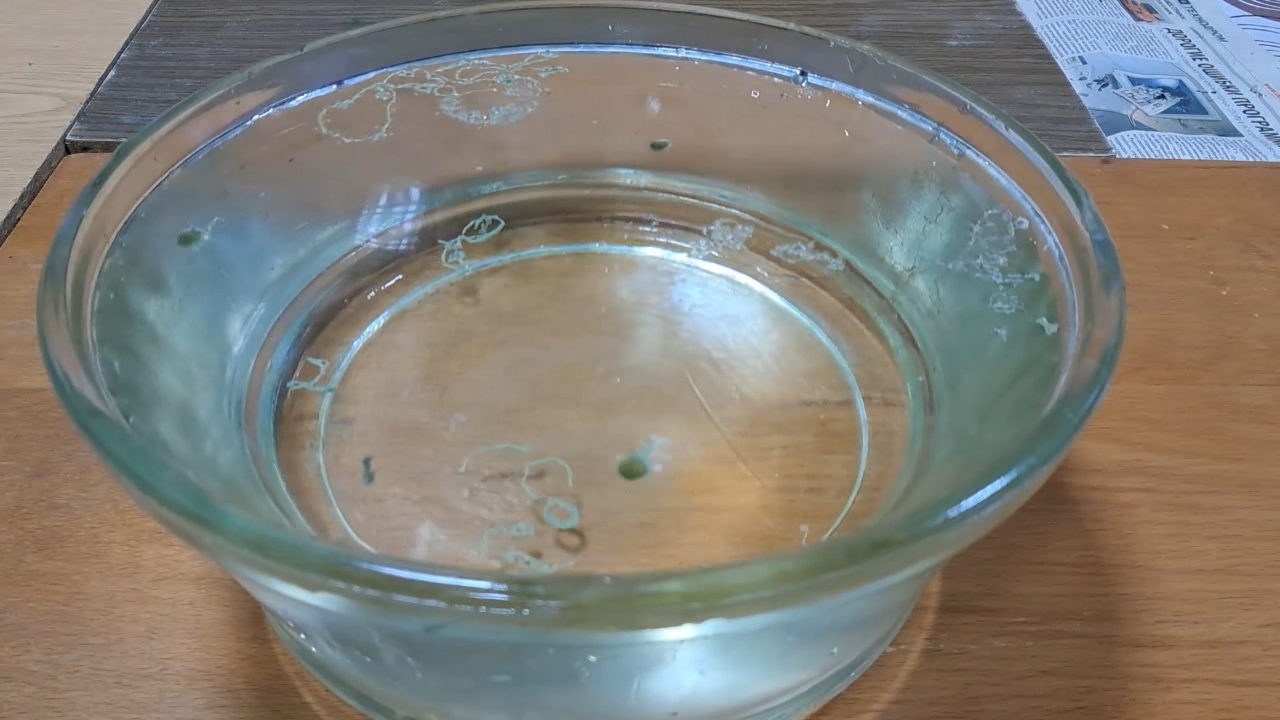
|
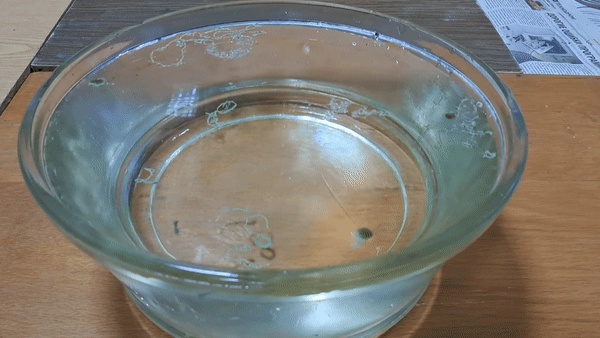
|

|
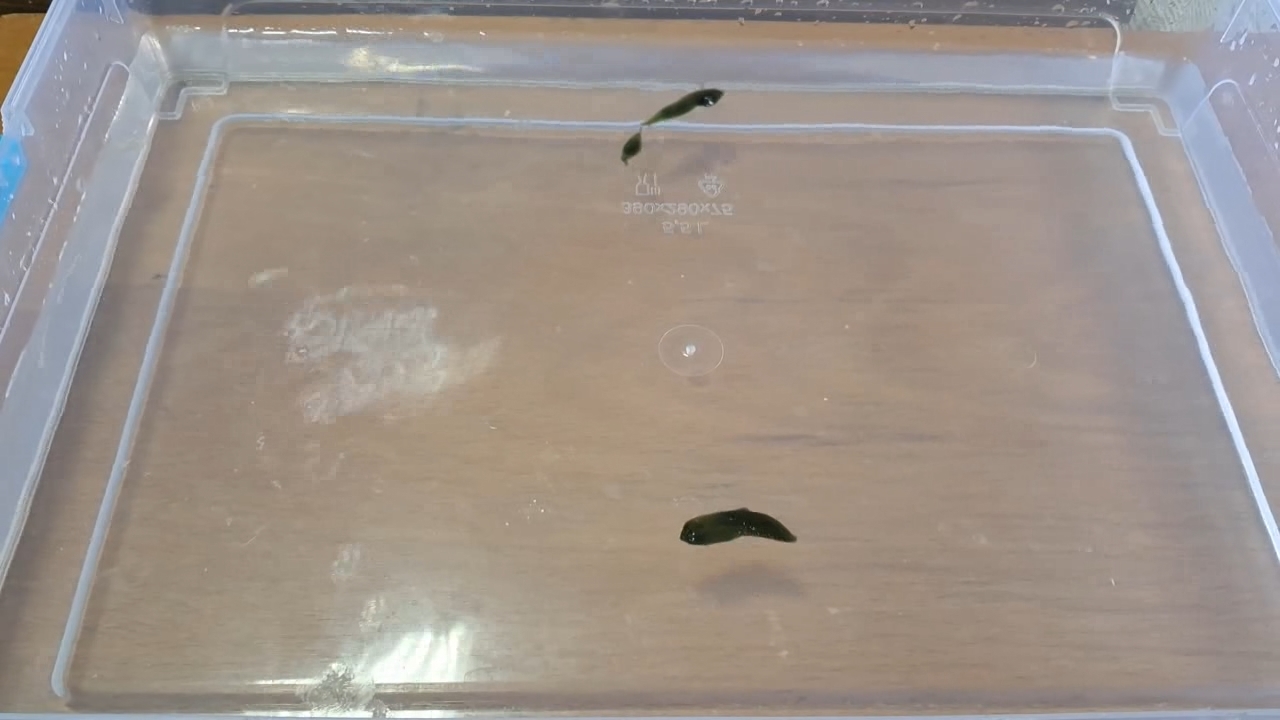
|
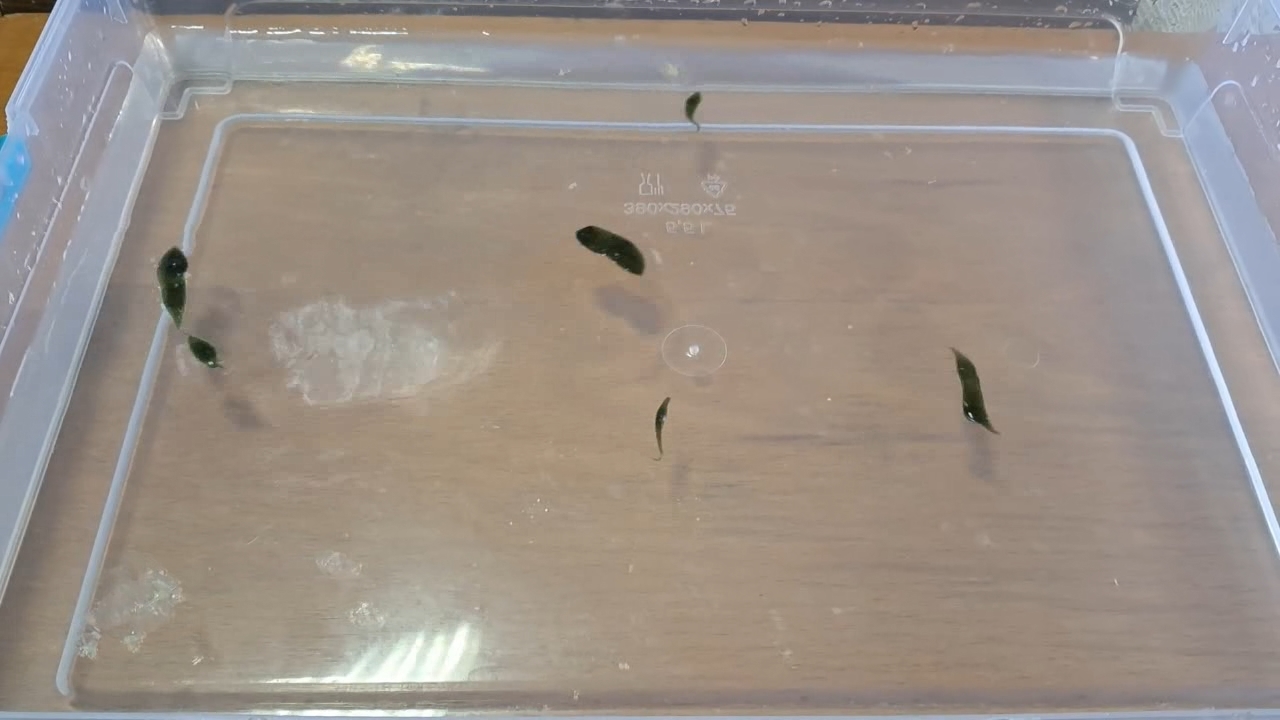
|
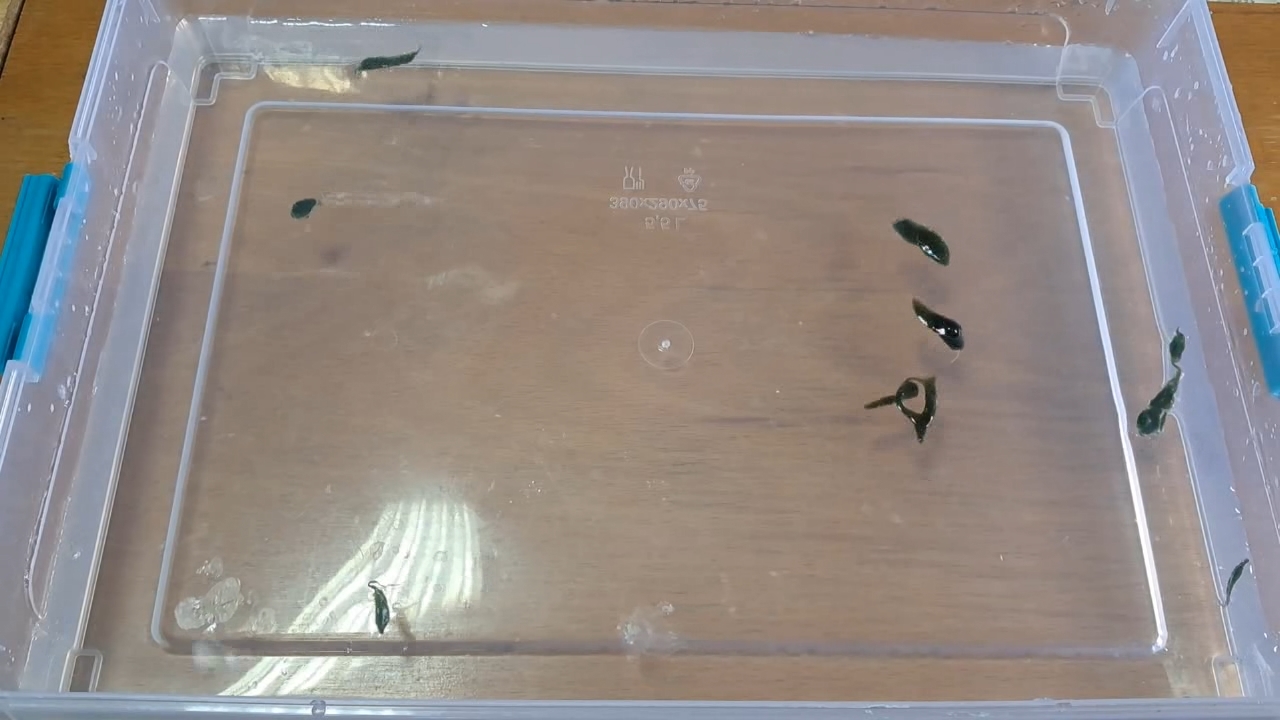
|
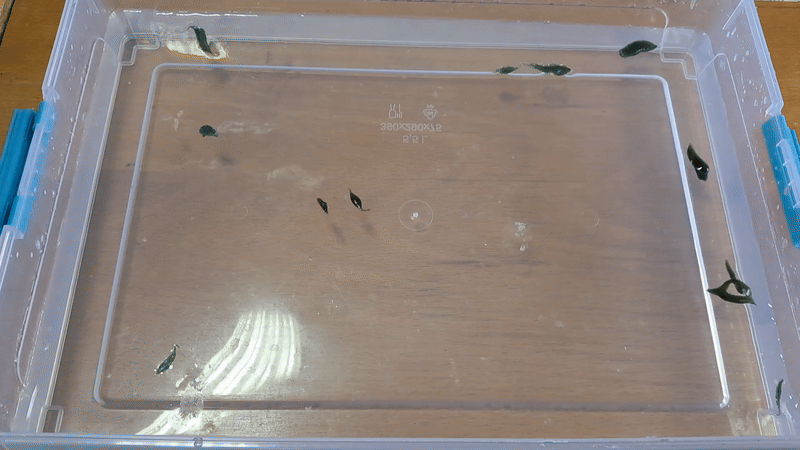
|
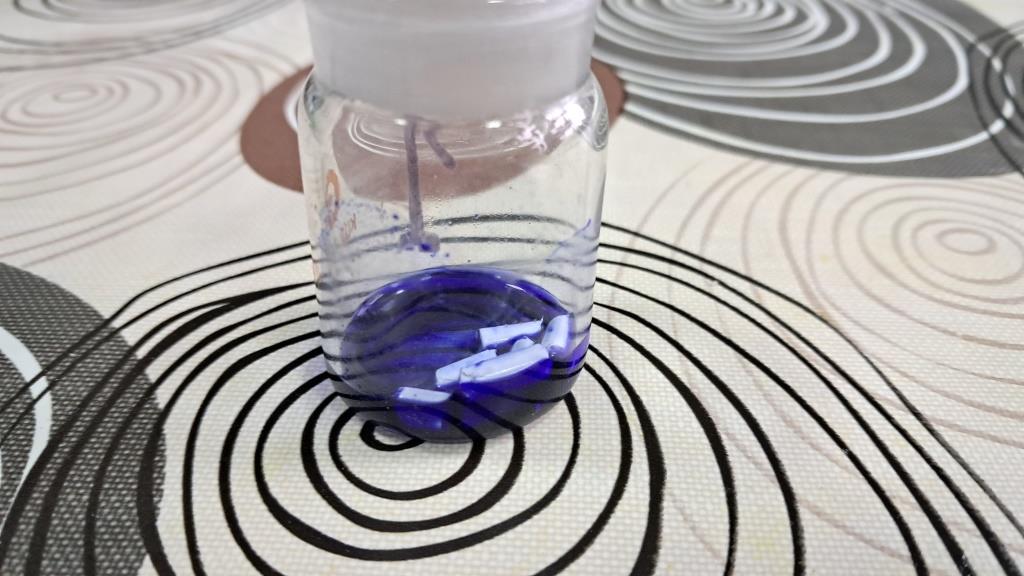
|

|

|